









































CRIMINAL sentences have been imposed on two waste management companies and their former CEOs for a skip bin and waste processing cartel.
e Federal Court convicted and sentenced Bingo Industries, and Aussie Skips Bin Services and Aussie Skips Recycling (together Aussie Skips) last month for criminal cartel o ences under sections 45AF and 45AG of the Competition and Consumer Act relating to a price xing arrangement for demolition waste services in Sydney.
Bingo’s former managing director and CEO Daniel Tartak, and Aussie Skips’ former CEO Emmanuel Roussakis, were also convicted and sentenced.
have received $91,000 in fines for “multiple failures”, which ended in a
incident
the South Eastern Freeway at Urrbrae.
This follows a South Australian Police investigation into the driver, vehicle and its registered operator.
The court heard the operator had permitted an unlicenced driver to drive a defective and overmass heavy vehicle without undergoing an

Bingo was ned $30 million and Aussie Skips was ned $3.5 million after each company pleaded guilty to having xed and increased prices with the other for the supply of skip bins and the provision of waste processing services for building and demolition waste in Sydney.
Bingo’s ne of $30 million is the second largest ne imposed for criminal cartel offences under the Competition and Consumer Act.
Tartak was sentenced for two criminal cartel o ences to two terms of imprisonment of 18 months each, to be served concurrently over two years as an intensive correction order, including 400 hours of community service. Tartak was also
induction or any training, and that the operator did not have adequate policies and procedures in place.
The incident occurred on July 24, 2022 and involved one heavy vehicle and several other vehicles, with nine people injured – five of which had to be cut free from their vehicles by emergency services.
A sentence was handed down on February 23 at the Adelaide Magistrates Court, with Malcolm Lindsay Swansson and his company, Malan-

ned $100,000 and banned from managing corporations for a period of ve years. Roussakis was sentenced to 18 months’ imprisonment for one criminal cartel o ence, to be served as an intensive correc-
tion order, including 300 hours of community service. Roussakis was also ned $75,000 and banned from managing corporations for a period of ve years. In imposing these sentenc-
dy Pty Ltd, receiving fines of $84,000 and $7000 respectively.
The heavy vehicle company and operator were found guilty and sentenced for Category 2 offences under the Heavy Vehicle National Law (HVNL).
“It’s imperative that operators understand their obligation to keep their drivers, and importantly all road users, safe on the South Eastern Freeway, said Ray Hassall, executive director at the National Heavy Vehicle Regulator (NHVR).
“In this incident, we’ve seen a heavy vehicle lose control, skid and roll into oncoming traffic at the intersection.
“This case strongly reminds us of the reasons for the robust safety and operational standards within the heavy vehicle industry.”
NHVR acting director of prosecutions Elim Chan said the lack of policies led to the operator’s failure to take reasonable steps to eliminate or minimise public risk from arising.








es, the Court took into account the early guilty pleas of each of the o enders.
Bingo chief executive ocer, Chris Je rey, said that the company has learned from the experience and they’re glad to put the matter behind them.
“We’ve got a new owner, a new board, a new chair and a new executive team,” he said.
“Since the matter occurred close to ve years ago, we’ve signi cantly improved our focus on governance and compliance.”
Je rey added that Bingo had undertaken a comprehensive review of internal processes and implemented enhanced compliance training programs to ensure the situation is never repeated.
“The NHVR is committed to ensuring all parties in the Chain of Responsibility uphold their duties to safeguard public safety,” she said.
“The NHVR challenges industry to not only meet, but exceed the safety standards set forth under the HVNL.
“It’s our collective responsibility to ensure the safety of our roads for both drivers and the public.”
The driver of the truck is awaiting trial on dangerous driving charges.















THE failure of a SA Safe-TCam system to correctly adjust for daylight saving changes ended in a surprise court summons and a costly legal bill for a distraught veteran interstate truckie.
Adelaide-based Kym Ottey has since had the charge of recording false or misleading entry after allegedly travelling between Safe-T-Cam sites in less than the allowable time withdrawn and had part costs awarded against the National Heavy Vehicle Regulator (NHVR).
But with clocks again set to change back around much of Australia on April 7, Ottey has come forward with his story as a warning to others.
“How many other drivers around Australia have been falsely charged because of daylight saving changes that the NHVR missed and just paid the ne?” wonders Ottey.
“And how can NHVR get it so wrong, when daylight saving changes time twice a year, and has done so for many years?”
Ottey’s ordeal relates to an
April, 2023, return run – it took another nine months for the summons to arrive – from Adelaide to Perth, a regular weekly journey.
As later veri ed by his company’s telematics information, Ottey departed from Adelaide late on Saturday, April 1.
He drove through the rst three Safe-T-Cams - Bolivar, Port Augusta (Sterling North) and Penong – without raising a red ag on the NHVR’s system, but by the time he’d got to the fourth, around four hours later at Border Village, the clocks had gone back an hour.
“So, they thought he’d gone through an hour earlier than what he should have done,” explained Murray O’Neill, the driver compliance coordinator for the transport company.
“ ey’re saying he went through in three hours instead of four. You’d think that would ring some alarm bells and instead of charging him, wouldn’t you think they’d haul the truck over the pits and check the speed limiter?
When the shock summons landed on January 24, 2024 – just three weeks before the
scheduled court date in Adelaide and a potential maximum penalty of $11,820 –O’Neill did his best to reassure Ottey that the telematics data was on his side, but the incident quickly “snowballed”.
A solicitor had to be engaged to explain the situation to the NHVR, yet according to documentation sited by Big Rigs, the regulator still insisted there was a basis for a False and Misleading o ence in the same 24-hour period.
Ottey said that was because the regulator had also mistakenly adjusted Safe-TCam times before the clocks changed.
“We all know that the time zone in which you commenced the trip has to be used for the entire trip.”
Ottey nally received conrmation on February 15 that the NHVR prosecutor was withdrawing the charges, with part costs awarded against the regulator.
But to add salt into the wounds, six days later, a Notice of Penalty relating to the same incident arrived – $800 payable within 28 days – alerting Ottey to the fact he was to


be convicted in his absence.
“For whatever reason, the paperwork wasn’t handled correctly, and I now have paperwork advising that the charge was withdrawn – and not that the defendant [Ottey] was convicted in his absence,” Ottey added.
“ anks to modern technology and my employer’s assistance, this matter was able to be cleared up. However, it did take time, and a certain amount of stress and anguish was involved.
“lt’s not a good thing to be preparing for a 5400km return trip and dealing with what I believed to be a never-ending
process that kept throwing curve balls at me.
“It also hardly seems fair to be out of pocket to prove one’s innocence when it was all due to an error by NHVR.”
Raymond Hassall, NHVR executive director statutory compliance, told Big Rigs that the regulator accepts responsibility for the “work and rest hours calculation error” that occurred.
But following a review of 1000 Safe-T-Cam notices issued within 14 days of the daylight savings changes last year, Hassall said Ottey “appears” to be the only driver a ected.
Camera sighting data is col-









lected in UTC time. If a potential o ence is detected, the images undergo a review process. Hassall said the incident was received correctly from the Safe-T-Cam system, however a “calculation error” occurred during the review process.
“ e NHVR has implemented process improvements to help prevent similar incidents occurring in future,” Hassall said.
If other drivers believe they have received an incorrect notice during the daylight savings changeover on April 2, 2023, Hassall encouraged them to contact the NHVR at prosecutions@nhvr.gov.au.







TRUCKIES’ advocate Wes Walker has had a gutful of poorly-trained drivers.
e last straw for Walker, who is at the frontline of the issue as the uno cial sheri at the busy Gatton breakdown pads, was watching two truckies bungle a recent changeover.
Walker helped as much as the drivers would allow him to, but was called away to another meeting in town before the pair could get on the road.
A few hours later he got
a frantic call from another truckie on site pleading with him to come back to the pads to sort out the resulting mess – the trailer in question unhitched, blocking the main roundabout into the facility for several hours.
“I thought one of them [the dog runner] was just a passenger, because he had no idea how to even guide the dolly back on,” Walker said.
“How were they going to make it to Adelaide? It’s just a blessing that the trailer was dropped on the roundabout

because what might have happened out on the open road?”
Walker said he doesn’t blame the drivers in this scenario, or any of the many others he encounters lacking basic skills. He points the nger squarely at the Department of Transport and Main Roads, the state agency responsible for licensing drivers up to the MC level.
“It’s the people handing the licences out who are to blame here,” he said.
“Everyone’s entitled to make a living, no matter what nationality you are. Nine out of 10 dropped trailers out here [at Gatton] are done by blokes who aren’t from overseas.
“Due care and professionalism has gone out the window. I’ve had to help them do tarps because they don’t even know how to put a tarp on nowadays.”
A TMR examiner, who spoke to Big Rigs on the condition of anonymity, said he was shocked to discover that the agency was promoting sta to driver examiner roles without them ever having driven in a professional onroad role themselves. A recent job advertisement for a regional Queensland examiner on Seek con rmed the fact, with the rst dot point saying:
As a driving examiner you will:
• Conduct driving assessments to determine the competency of applicants for all classes of driver’s licence.
e only licence quali cation, according to the same job ad, was that applicants had to possess a current open HR driver licence, held for a minimum of 12 months.
“ ey can then apply for the job and go testing people,” our source con rmed.
“Some of the sta have worked there for years and have only done their HR licence from working there, and then they test people as well.”
e TMR examiner tells us those same examiners are now handing out truck licences in Queensland without any onroad experience. eir only quali cation is that they have held an HR licence for 12 months.
A TMR uses internal driving examiners to conduct practical driving tests for all vehicle types except motorcycles and MC vehicles. It’s the only jurisdiction in Australia that doesn’t allow RTOs to train and licence across the board.
When the insider raised his concerns, he said he was told it was a common practice to promote TMR sta into these roles, based on the number of years on sta , rather than time
WES WALKERin a truck cab.
e source tells Big Rigs that the same thing is happening in driving schools, which can also dish out MCs.
A well-placed registered training organisation boss, who has been training inside and out of government departments for more than 20 years, said he’s seen a “big slip” in the quality of drivers coming through the system in the last few years.
He said the issue has only been exacerbated by the wait to be tested – the worst delays he’s seen in 20 years – which is putting added pressure on TMR to nd more examiners.
“If you don’t have the practical knowledge and experience to handle 50-, 60-, 70-, 80-tonne driving down the road, the piece of paper is not going to help you if you physically can’t do it,” said Brian, (a pseudonym we’ve given him
to protect his identity).
“I think that’s where a major part of the shortfall is coming from, the inexperience of people that are in positions that physically can’t go and do the job themselves.
“If we’ve got assessors in that department [TMR] that have got zero experience driving a heavy vehicle, how can they assess someone driving a truck?
“When you see what we’ve got going out on our roads with licences, it is absolutely and totally frightening.”
He said that in 20 years in the job as a trainer, he’s never once had an audit done by the government agency on his skills and standards.
He pays $500 for his annual driver training ticket and that’s it.
“I have a blue card in my wallet that says I’m a driver trainer and once I got that ticket, I don’t have to demonstrate my skills at all.”
Brian said he chose to speak out because the situation has got so dire something needs to change.
“We have to look at a truck driver’s workplace as being out on the road, and everyone has got the right to go to work and come home safely,” he said.
“If we’ve got people out on the road who have had an advantage in getting into that












workplace, it raises alarms and concerns for me.
“I want my family to be able to drive out on the road and feel con dent that the people that are driving heavy vehicles, in particular, have met the same requirements.
“We’re one state. We should have one blanket criteria that we’ve got to meet, and we don’t have that.”
Brian believes tightening up on the skill standards of the assessors would be a great start to xing the problem.
“Why would it be that somebody who has never driven a truck down the road, that cannot drive a truck competently, why should they be in a position to be able to say to somebody that I’ll issued you with a licence?”
Queensland Trucking Association CEO Gary Mahon wouldn’t comment on the standards of the TMR examiners but believes block booking assessments will help take some of the pressure o the system.
“Most eets are still struggling to get drivers, so we need a reliable supply,” Mahon said.
“One of the impediments we’re running up against is that RTOs are getting the people trained and then having to wait too long to have them assessed to get a licence.”
At deadline for this issue, Mahon said he was due to meet TMR to discuss the possibility of a “better arrangement” for block booking testing.
“It might be on a Saturday, or might be a day during the week, and if the RTOs have

got the supply, they’ll make the examiner available to be able to roll them through.”
A TMR spokesperson told Big Rigs that its driving examiners have a detailed understanding of the Queensland Driver Licence Assessment guidelines (QSAFE), “which are used to ensure consistency and fairness in testing procedures, supporting a higher level of safe driving and overall road safety”.
“We are committed to continually enhancing the expertise of our driver examiners. is is re ected by providing additional training and diverse on-road experiences. e na-
ture of the extra training may vary from region to region, ensuring a tailored approach to skill development,” the spokesperson said.
“Any change to allow RTOs to conduct testing for additional licence classes would present a range of complexities that would need to be addressed. is includes an extensive, mature and capable auditing system supported by increased resources to ensure a robust framework.
“For these reasons, TMR is not currently considering making changes to its current driver training or driver testing framework.”
OUR story in the March 1 issue about NSW truckies over 70 having to undergo an annual skills test to keep their licence triggered an overwhelming response from aggrieved drivers.
“I’ve had no problems at all since I moved to Tassie,” said Nick Tetley, a 74-year-old who was forced to do three medical exams and a driving test every year after turning 70 because he lived in NSW.
“I still have to do a medical every year [in Tasmania] for being over 60, and for basic fatigue management, but I don’t have to do a driving test.
“NSW is much more stringent compared to other states when it comes to rules for older drivers, and I don’t think it’s fair.”
Tetley suffered a minor heart attack five years ago, which was why he was made to undergo a third medical exam every year when he lived in NSW, but his health has bounced back and his driving has been unaffected.
What annoyed him most was the expense involved.
“I had to pay for everything. Three medicals, which were about $180 each, and the driving test which would probably cost me $1500. You can’t claim that on tax and Medicare doesn’t cover it.”
On a practical level, it was also extremely difficult for Tetley – who has been on the road for 56 years – to arrange his MC driving test.
He had to supply his own truck, and marry up his schedule with a qualified assessor
who didn’t work on the only day Tetley was available.
“I just couldn’t do my test. It was like bashing my head against a brick wall.”
“NSW are standing alone with their strict rules – they should be consistent with the other states.”
Long-time MC holder Bill Mason, 73, agrees. He had been working in WA during Covid, driving quads and triple road trains, and living in Queensland until moving to NSW last year.
“It just doesn’t make any sense,” said Mason who was also surprised to find that he would only need to drive an HC (single trailer) combination to get his MC in NSW.
“It’s a major inconvenience and expense the over-70 MC drivers don’t need. If we meet medical conditions, then let’s just move on.
“I would have been far better off maintaining my licence in Queensland where I just have to do an annual medical.”
Mason said he enjoys the chance to jump into a truck for a few weeks at a time to top up his pension, but he’s now looking to move back to Queensland.
“They [NSW] just need change their rules. Because there is such a shortage of drivers it’s just an extra cost that we don’t need. We’re competent drivers.”
Former truckie Jason Kemp, who was also a truck driving instructor for 14 years until he gave it up last September, agreed that the NSW rules are
far too strict, and also pointed that older drivers in NSW must do their driving test through a motor registry – but according to him, there are no motor registries on MC routes.
“When you do an aged driving test in NSW, you take a heavy combination truck to the motor registry and you pretend that you’re towing a B-double,” he explained.
He gave an example of a truck driver friend who lives 100km outside Bourke and has to travel to Dubbo for his annual test.
“He is 89 years old and carting cattle in a triple road train with no issues. But every year he has to take a single trailer, three quarters loaded, to Dubbo, and pretend that he’s pulling a B-double or a triple road train.
“You’d think he was in his 60s to look at him - he’s up and down off the trailers, running around.
“He’s fitter than a bloody 18-year-old. It’s not about age.”
SYDNEY
510 Victoria Street, Wetherill Park NSW 2164
Ph. 02 9756 6199, email: isri@isri.com.au, www.isri.com.au
BRISBANE
3/120 Gardens Drive, Willawong QLD 4110


Ph. 07 3275 2044, email: sales@isribrisbane.com.au, www.isribrisbane.com.au
MELBOURNE
Unit 1/569 Somerville Rd, Sunshine West VIC, 3020
Ph. 03 9311 5544, email: sales@isrisunshine.com.au, www.isri.com.au
MACKAY ,
Ph. 07 4952 1844, email: admin@isrimky.com.au, www.isriseatsmackay.com.au
PERTH R , WA 6106
Ph. 08 9362 6800, email: info@mmtisri.com.au, www.mmtisri.com.au
DARWIN
Mobile Sales and Service
Ph. 08 8927 0986, email: info@isridarwin.com.au, www.isridarwin.com.au
ADELAIDE
TAMDELE, 21 Hakkinen Road, Wingfield SA 5013
Ph. 08 8347 1222, email: sales@gitsham.com.au, www.gitsham.com.au
NEWCASTLE/HUNTER VALLEY
Unit 2/13 Hinkler Ave, Rutherford NSW 2320
Ph 02 4932 0600, email: sales@hvss.com.au www.isri.com.au












AN interstate truckie has shared his frustration after being ned $711 for driving a B-triple at 99km/h near Darlington Point on the Stuart Highway in NSW.
Shane Clamp, who has been a truck driver for 30 years, was stopped by a police o cer who slapped him with a ne for “contravening the 90km/h speed limit” for PBS road trains.
However, Clamp has claimed that the vehicle he was driving operates under National Class 2 Performance Based Standards (Tier 1) Authorisation Notice 2022 (No.1) and was allowed to be travelling on that road at 100km/h.
He told Big Rigs: “When I saw the candy car coming around the corner it was like I had just robbed a bank.
ere were ashing lights and sirens.
“ e policeman pulled me over, and I said I wasn’t breaking the law.
“He said ‘No, you’re not
breaking the state law but you’re breaking the PBS rule.’
“I was treated like a criminal, when the ne shouldn’t even have been issued.”
e incident originally happened in December 2022, and Clamp has since lodged multiple appeals with Revenue NSW.
All of his appeals have been rejected and the ne still applies.
e driver, who delivers supermarket produce from Adelaide to Sydney, said: “It’s caused me a lot of stress.
“I feel like Revenue NSW don’t care at all, as long as they have money owing in.
“It’s just wrong, it’s robbery.”
Clamp wants to ght the ne in court, but as he’s based in Strathalbyn, SA, this would end up costing him more money than it would be worth.
“ ere’s a 99 per cent chance that I would win in court but if I didn’t, I would have to pay court costs,” he continued.
“I would also have to pay air fare to go to NSW, and accommodation costs.
“And I would have to be out of work for three days, so I would lose about $1400 gross.
“I asked Revenue NSW if I could ght my case in court via video call, and they said no.”
Clamp said he told a sta member at Revenue NSW that he was a law-abiding citizen who paid $38,000 in taxes in 2022, and was told that he must be earning “great money”.
“I’m always nice and polite when dealing with people, but that really annoyed me,” he said.
“I work extremely hard for my money. I earn every single cent.
“ is job is getting more and more dangerous by the day.
“I walk out the door and I never know whether I am going to come home again.”
He added that government employees might think driving at 90km/h is safer


than driving at 99km/h, but this is not always the case.
“It’s actually more of a hazard when you’re doing 90km/h because there are always morons behind you in their cars and they’ll do anything they possibly can to overtake you in that truck.
“I’ve had people overtake me on double white lines, going around corners. ey are risking their lives and yours.”
Big Rigs has spoken
to Revenue NSW about Clamp’s ne but they would not comment on the record about an individual case.
However, a lawyer who specialises in heavy vehicle law told us he believes the ne should never have been issued.
Adam Cockayne, the Principal of Heavy Vehicle Lawyers, said: “ ere is no evidence anyone has looked
at the applicable HVNL Notice and applied it to Shane’s vehicle.
“ is is yet another example of NSW Police and Revenue NSW failing to do their job.”
He referred to other instances of nes being incorrectly issued, such as those for using mobile phones.
“ ese nes are frequently issued when the camera images clearly show the person was holding another object or nothing at all.
“ ey only seem to be withdrawn when the media gets involved.”
Cockayne argued that it is inappropriate for Revenue NSW, a tax collecting agency, to have any role in the criminal justice system.
“Tra c o ences are criminal matters and nes should only be issued or reviewed by a prosecutor who is experienced in tra c matters,” he added.
Heavy Vehicle Lawyers is now acting for Clamp on a pro bono basis to get his ne withdrawn.

THE closure of the ‘Dust Bowl’, an informal parking bay for truckies on the Hume Highway at Menangle, NSW, has left high-profile truckie Rod Hannifey fuming.
Transport for NSW sent truckies packing on Thursday (February 29) because it says it needs the northbound space to help complete Stage 1 of the Spring Farm Parkway connection.
Hannifey said the bay could accommodate up to five or six B-doubles at a time, but it is now reserved exclusively for Oversize Overmass (OSOM) vehicles.
“We’ve been telling them there’s not enough parking in Sydney, they’ve said they’re going to do something, and what are they going to do? They’re going to take away another bay,” the
interstate truckie said.
“They’re going to argue we need a dedicated OSOM bay, and I have no problem with that, but they should be building a new one, not repurposing what’s already there and reducing the total number.”
Hannifey said he doesn’t buy the argument that there is room at nearby Pheasants Nest.
“Yes, they have increased capaciity [there], but is it enough? I don’t think it is. They’ve promised us parking in Sydney, nothing has been done, and now they’re going to take another step to reduce it even further.
“There is now nothing between Pheasants Nest and Wyong, if you’re travelling to Sydney.”
A spokesperson for TfNSW confirmed to Big Rigs that the Dust Bowl
is now only for the use of OSOM vehicles, and that heavy and light vehicles will need to use an alternate location such as Eastern Creek, Pheasants Nest, Sutton Forest, Mt Ousley and Picton Road.
“As a priority of the NSW government, Transport has collaborated with the road freight industry and is working to improve the quantity and quality of heavy vehicle rest stops in NSW,” the spokesperson said.
“Several projects are underway and are in the investigation planning, design, and delivery phases. Transport is working to improve heavy vehicle rest stopping facilities across both regional NSW and Greater Sydney to support driver wellbeing and assist drivers to comply with fatigue management regulations.”
A VALID Maritime Security Identification Card (MSIC) and OneStop access swipe card is now required by all truck drivers to access the Melbourne PortRail and CargoLink facility.
In addition, stevedore Patrick says all drivers must complete the online site induction through the OneStop website.
As the CargoLink facility is not segregated from the PortRail Terminal, drivers de-hiring containers to CargoLink will also need an MSIC and OneStop access card.
Patrick says that the “best
value” option is a $704 card that gives you both MSIC and access to facilities for two years, or $1017.50 for four years.
The cheapest option is a two-year pass for $412.50, but that only applies if you already have a MSIC.
The stevedore says the reason for this requirement is that the PortRail Intermodal Terminal will be a section 77G underbond licensed premises.
Peak industry body, Container Transport Alliance Australia (CTAA), understands that Australian Border Force (ABF) has
apparently agreed that the display of an MSIC as well as the recording of drivers’ details through the OneStop access card satisfies Patrick’s requirements to maintain a “visitors’ log” for the licensed site in accordance with Australian Customs Notice No. 2022/46.
CTAA objected to the requirement for truck drivers accessing CargoLink to possess and display an MSIC.
It argued that a significant percentage of truck drivers in Melbourne doing container delivery work and import container de-hires to empty container parks
(ECPs) do not possess an MSIC currently.
“In addition, there is no requirement for an MSIC for entry into all other ECPs in Melbourne, including DP World Melbourne Logistics Park (MLP) adjacent to the new Patrick CargoLink facility in the Swanson Precinct of the Port of Melbourne,” said CTAA director Neil Chambers.
“The federal MSIC regime is designed to provide evidence that the holder has had a valid background check from AusCheck to allow unsupervised access to the declared maritime secu-
rity zone.
“In our view, the simple carriage and recording of the details of a valid heavy vehicle driver’s licence and an access card would have sufficed for access to Patrick’s PortRail Terminal and the new CargoLink facility.”
Chambers said that this new requirement will make the de-hire of empty import containers to Patrick CargoLink in Melbourne more expensive.
“Drivers who don’t possess an MSIC who may be carting an empty import container from a client’s premises will not be able to
proceed directly to CargoLink for de-hire,” he said.
“Instead, the import empty container will need to be staged through a yard and the task allocated to a driver who does possess an MSIC.
“This mandate will force many truck drivers to apply for an MSIC and a OneStop Access Card, which is expensive and takes approximately 21 days to process.”
Chambers said that the new mandated requirement may lead to more requests for import containers to be redirected away from CargoLink Melbourne to an alternative de-hire facility.

















 EDITOR JAMES GRAHAM
EDITOR JAMES GRAHAM
NSW is in danger of being labelled the least truckie-friendly state in Australia, if it hasn’t picked up that dubious honour already.
Months after the Labor state government promised drivers more rest areas in the Greater Sydney region, still not a sod has been turned on a new site.
To add insult to injury, we now hear that Transport for NSW has shut down the popular informal bay near Sydney known as the Dust Bowl (see story on page 6).
Can it get much worse for NSW drivers? It can if you’re about to turn 70 and want to hang on to your MC licence.
As our story in the March 1 issue and the follow-up on page 5 of this issue highlights, this ridiculous testing regime isn’t winning any points with our senior drivers. None of them have an issue with doing a medical but asking them to prove they still have the skills to drive a multi-combination is a step too far. You can do better NSW.





















WESTERN Star’s X-Series has been named Truck of the Year Australasia (ToYA) 2024, impressing judges with its range of features.
e ToYA award was presented in Christchurch, New Zealand at the New Zealand Trucking Association’s TMS Exhibition on March 13.
is award is a liated with the global International Truck of the Year award, which is presented each year in Europe.
Also in contention for the top prize this year were the Volvo FH Electric and the Sca-
nia Super. e nalists were selected by event co-judges Tim Giles, editor of Big Rigs’ sister publication PowerTorque, and Dave McCoid, NZ Trucking magazine editor, who also presented the award at the biggest show on the NZ calendar.,
Accepting the trophy was Hamish Christie-Johnston, managing director of Penske Australia and New Zealand.“I am thrilled to receive the 2024 Truck of the Year Australasia award on behalf of our Australia and New Zealand Western
Star teams,” he said.
“Since we launched the allnew X-Series in late 2022, we’ve received outstanding feedback from everyone who has driven the trucks.”
To be considered for the Truck of the Year Australasia, a truck needs to be able to overcome the sorts of issues trucks elsewhere in the world don’t have to deal with.
Trucks coming to Australasia have to cope with a very di erent trucking environment to many of their home countries and have to be
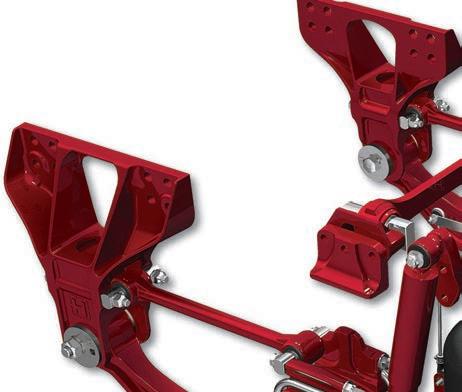



adapted accordingly.
Although the X-Series was rst released in Australia in 2022, the launch of the range into New Zealand was delayed until 2023 when Penske could get access to the twin steer version of the new models.
One of the rules for inclusion in contention for the ToYA is that the vehicle must be available in both countries.
e arrival of the Western Star X-series in our markets sees a substantial step forward for the brand, with its truck o ering being brought bang up to date with all of the latest technology.
e range uses the latest versions of the DD 15 and DD 13 engines available from Detroit, compliant with Euro 6 emission regulations.
It also includes the Detroit DT12 automated manual transmission, while still o ering the option for truck buyers to specify the Eaton Roadranger 18-speed manual.
Also tted in the range is the Detroit Assurance-5 safety suite, which includes the latest safety technology, which is step-by-step being mandated on Australian trucks.
THE heavy-duty sector again experienced a record-run of truck sales in February, with Kenworth and Volvo already locked in a gripping tussle for supremacy.
In the latest numbers just released by the Truck Industry Council, there were 1308 heavies delivered for the month, 84 more than the previous best mark for February set last year.
Kenworth came out on top with 279 units (up from 251 in the corresponding 2023 month), 32 clear of Volvo which had kicked off 2024 on top.
Back in third, Isuzu had another solid month with 201 sales. The leading trio has already broken clear of the chasers headed by Scania, which again topped the ton to claim fourth spot in the overall standings.
The race is on amongst the pack to see who will emerge into the top-5 at the end of 2024.
There’s not a lot separating the next half a dozen, or so.
So far in 2024, Kenworth has the nose back in front with 453 units, or 20.1 per cent market share, just 27 clear of Volvo (426), which boasts 18.9 per cent of the biggest new rigs on Australian roads.
February was also another record month for overall truck and van sales in Australia.
Total deliveries for February reached 3592 units, up 93 on the previous record total of 3499 for February, set last year.
Not surprisingly, perennial market leader Isuzu again led the charge with 1050 units delivered for the month, bringing its 2024 total to 1808, or 28.7 per cent market share.





A WA operator has launched a specialised MC driver training program that will see participants graduate with the ability to steer its quad road trains, in a bid to help ll over 100 driving positions.
e three-month program – being delivered by Mineral Resources (MinRes) – aims to upskill drivers with an existing MC truck licence with the skills and knowledge to drive its 330-tonne quad road trains, each with a gross vehicle mass of 425 tonnes.
Mineral Resources (MinRes) is a mining services company, working in elds including iron ore and lithium. It operates a large truck eet, including driverless road trains – with 120 of these autonomous vehicles to be in operation before the end of this year.
e company says its recently launched MC driver training program is tailored to each individual’s experience, covering vehicle pre-start inspections, daily safety checks, driving on the haul road, operating the side tipper trailers, radio communications and much more.
THE PROGRAM IS A FANTASTIC INITIATIVE TO UPTRAIN PEOPLE WHO HAVE LITTLE TO NO EXPERIENCE IN MINING, WITH MINRES LOOKING TO FILL MORE THAN 100 POSITIONS ACROSS OUR SITES.”
JASON HOLMES
Jessica Wilson-Smith successfully completed the training program and is now based at MinRes’ Koolyanobbing iron ore mine site, driving Kenworth C509 and T909 trucks with up to ve trailers.
“I spent six years in the New Zealand Army as a combat driver and wanted to transition to the mining industry. I’d applied for a lot of jobs but they all wanted the same thing – experience,” Wilson-Smith said.
“MinRes o ered a training program that didn’t require much mining or MC experience, which is great because it allows people to get their foot
in the door and start a new career.”
According to MinRes general manager port and logistics Jason Holmes, MinRes is embarking on a period of transformational growth, with the training program introduced to meet the huge demand for heavy haulage truck drivers.
“ e program is a fantastic initiative to uptrain people who have little to no experience in mining, with MinRes looking to ll more than 100 positions across our sites,” Holmes said.
“ e trainees are partnered up with experienced drivers to learn the ins and outs of operating quad road trains.
“With a starting salary of six gures during the handson training period, trainees can progress to a fully edged MC driver pay within six months – o ering a unique opportunity to transition to a rewarding FIFO career with long-term prospects.”
To date, 40 trainees have taken part in the program, with graduates working at MinRes and CSI Mining Services mine sites across Western Australia.
A FOTON EV concrete truck will be undergo a six-month trial by Holcim Australia at a remote mine site near Port Hedland, WA, to see how it stacks up.
Being exposed to extreme operating conditions, Foton Mobility Distribution (FMD) and Holcim will test the viability, reliability and performance of the Foton e-AUMAN C EV truck under the unique operating requirements of ready-mix concrete distribution.
If successful and approved under Australian Design Rules (ADR) for public road use, the trial paves the way for Holcim to deliver its ECOPact low-car-
bon concrete products more sustainably.
“By replacing one diesel concrete truck with an EV we will eliminate approximately 42 tonnes of CO2 from entering the atmosphere each and every year. This equates to a fuel cost saving in excess of $33,000 per annum, before further savings are extracted via lower service and maintenance costs,” said Cyril Giraud, head of sustainability at Holcim Australia and New Zealand.
“The initiative is aligned to Holcim’s global Accelerating Green Growth strategy. It serves as a local example of Holcim’s commitment to investing in
zero emissions vehicles, thereby helping to reduce environmental impacts while delivering innovative and sustainable solutions for our customers.”
For FMD, the trial will provide valuable insights into the performance of its larger zero emissions trucks, having already proven itself in the EV light duty truck sector. Neil Wang, FMD’s CEO said, “Working with the Holcim team has been extremely enjoyable and very educational, helping us to better understand our customers’ requirements. We are looking forward to a successful trial in the harshest operating conditions in Austra-



lia, and to the valuable operational data that will enable further improvements to be made to our products.
“The introduction of the Foton EV Concrete truck to the Australian market via this trial is the forerunner of a number of new and exciting Foton New Energy vehicles which will be introduced in 2024 in support of the transition to Net Zero. We look forward to assisting Holcim in its Accelerating Green Growth Strategy.”
Over the past year, Holcim Australia has been working towards decarbonising its fleet operations by conducting trials on battery-powered heavy vehicles.

Image:










A LOT has changed in the 50 years since Kelly Transport was founded, but one thing that has stayed the same is the family behind the business.
e company’s story began in 1974, when John Kelly bought a truck to transport shop supplies from Brisbane to Toowoomba.
Since then, Kelly Transport has grown from one to 34 employees, with 24 trucks operating across Queensland, Victoria, New South Wales, South Australia and Western Australia.
It o ers linehaul services, bulk pallet freight, overnight and dangerous goods freight services.
e business is now managed by John’s grandson Mitch, and is still very much a family
a air, with Mitch’s wife Jessika and mother Christine both working in the o ce.
Mitch told Big Rigs that he tried to move away from the transport industry when he was younger, but it kept pulling him back in. “I was a little whippersnapper behind the wheel, I’d be in the yard every school holiday,” he said.
“After I nished school, I tried to do something di erent, I went out and did a business course.
“But I just couldn’t step away and in the end they said ‘Well, if you’re going to drive trucks, we might as well teach you how to do it properly.’”
He enjoys working with his family, and said it brings many advantages for their customers.
“Sometimes with big business, things can get complicated,” he said.


“It can be hard to track down who is accountable if there are any issues.
“With our business, just like any family business, it’s simplied.
“If anyone needs me, they have my number.”
Mitch said the transport in-


dustry is “totally di erent” to how it was when his grandad did his rst grocery run half a century ago.
“In some respects, it’s a lot harder, and in some respects it’s a lot easier.
“ ere is a bigger focus on safety, which had to happen.

John and Pat continued to build their fleet, carting
all over Australia for a variety of customers, including Ansett and NQX. With all three sons working in the family business – Keith, Gary and Chris – the fleet grew to 15 Macks and UDs.

into a predominantly Kenworth fleet.
“But that’s not an easy process, and there’s a lot more compliance involved now.
“We’re just focused on making sure everyone is doing the right thing, and if anything does go wrong, we learn from it and try not to do it again.”
He thanked all of Kelly Transport’s loyal customers for their business over the years.
“We want to say a massive thanks for supporting us and giving us the opportunity to prove ourselves.”
Continued on page 14

John’s son Keith was the head of the business in the 90s, with his wife Christine working in the office.
The 1990s were a difficult time for the business. The recession made things challenging financially, and John’s health caused him to take a step back from work. His eldest son Keith took over day-to-day operations, as well as filling in behind the wheel where required. In 1999, after over a decade of battling health issues, John sadly passed away at the age of 67 in “true John Kelly style”in the middle of telling his nurse a joke.

50 years after it all began, Kelly Transport has 24 trucks in its striking fleet.








From page 12
Mitch Kelly and his family recently got to celebrate their major business milestone with a massive reunion at the Toowoomba Turf Club, attended by 190 current and former sta members.
“ e reunion was fantastic,” Mitch said.
“Everyone was well-behaved, and they had a great time.
“It was great to see some people we hadn’t seen in years.
“Our rst ever driver was there too, and my uncle Gary Kelly came from Adelaide.”
e reunion included a three-course meal, with live music, speeches and a video showing the evolution of the company through the years, followed by drinks. “ e bar shut around 11pm and then a few of us kicked on downtown.
“I called it at about 1.30am but I know there were a few of the boys who didn’t get home until 5am. “ ere were a few sore heads the next day!”
To mark the company’s gold anniversary, Kelly Transport also ordered a shiny new Kenworth C509, kitted out

with a special logo and the custom number plate “KELLY 50”.
e truck had its debut at the reunion party, much to everyone’s delight – and is now on the road with the rest of the eet.
John Kelly sadly passed away in 1999, at the age of 67 – but his wife Pat said she hopes he would have been proud of how far his family and the business have come.
“John had a vision, and we can only hope he’s looking down on his family proudly with his characteristic smile,” she said.

























































































‘I’ve created my own freedom’
A victim of domestic violence, Kathy Graham says participating in the Iron Women driver training program gave her an opportunity to take control and build her new life.
 BY DANIELLE GULLACI
BY DANIELLE GULLACI
WHEN Kathy Graham rst came across an ad for Volvo’s pilot Iron Women driver training program, she admits she was a little hesitant.
Having never driven a truck before – let alone sat in the driver’s seat – Graham was understandably apprehensive.
Based in Larapinta in Queensland, she had spent the previous 14 years working as a baker at Woolworths; but driving a truck was something that had been in the back of her mind for some time.
“Back in November, I came across an ad for Volvo’s driver training program on my DV group’s Facebook page but as a baker, I thought it was totally out of my league,” revealed Graham. ough once she got the ball rolling, it all hap-
pened so quickly. “I saw the ad on the Tuesday and the closing date was the ursday – so that morning I gave them a call and they asked me to come in for an interview. I started the program on the Monday, after doing night shift in the bakery the day before.”
Graham was one of 11 women to take part in the Iron Women program, which is run by Volvo Trucks Australia together with Wodonga TAFE. It combines two weeks of theory-based training followed by hands-on training.
e three-module course covers a variety of aspects including compliance, fatigue management, load restraint and how to complete a thorough truck check, through to obtaining a Heavy Rigid (HR) licence.
“I thought it would be easy but I found the rst week hard


because they teach you everything so you can then go into scheduling or logistics later on. ere’s a lot to take in,” Graham added.
“We did two weeks at Volvo’s Wacol facility and then went down to Wodonga TAFE in Victoria, doing track and on-road training behind the wheel. After doing some highway driving, I thought this isn’t too bad.
“I took a week of leave from the bakery to participate in the track and road training and then passed my licence. It was an introduction to help boost your con dence and ensure you can drive the truck.
“ en I came back and wasn’t sure what to do with it. I had two options: go back to the bakery or drive a truck.”
She chose the latter and secured a job working with Linfox. It’s ve days a week and though the days can be long, she says it’s given her the opportunity to gain meaningful employment and set herself up, adding that her nancial stability has also improved.
Graham is based out of the Larapinta depot and drives a heavy rigid, delivering to Woolworths stores within a 40-kilometre radius.
For women in her situation, Graham says that if you stay in the same place, you can remain a victim. And that’s what motivated her to take the plunge into the unknown.
Her experience with domestic violence was extremely serious. It was about 14 years ago when, during a siege situation, Graham was shot in the hip.
“Because of that injury, I have osteoarthritis in my hip, so being on my feet for so many hours in the bakery every day wasn’t helping.


“ e trauma from my DV is pretty dramatic as you can imagine, even all these years later. One thing they teach you about overcoming domestic violence is that you need to change your routine. You can’t keep doing what you used to do. I feel a lot safer now because of this program, because now I can drive a truck, which is so empowering.
“I had the opportunity to remain stagnant in a store or to be on the road where I know I’m not being followed or stalked. Yes, there are dangers on the road, but I don’t have to worry about some guy trying to hurt me or trying to shoot me – I’ve created my own freedom, my own life.”
On a personal level, Graham says the opportunity to take part in the program has meant the world. “My mental health has greatly improved – and it’s also that freedom of the mind that comes with that. I’ve become more con dent, and my self-esteem has improved. I also have mentors around me to take my career further, so I can progress


onto other things in the future.”
Along with the training offered by Volvo and Wodonga TAFE, Graham has received ongoing training and support through Linfox. is includes a buddy system. “I’ve had four weeks of one-on-one training with someone in the truck with me. at’s helped me learn things like how to dock the truck, because we’re pulling into con ned spaces, along with teaching us all of the truck’s capabilities.
“Linfox has given me the training and support I need –and the comradery has been great too.”
Graham added, “Volvo gave me the direct contact with Linfox and they were more than happy to take me on and give me a go – and I’m grateful for that. It’s a great company to work for and the older guys who’ve been doing this for over 20 years are willing to help you out and impart their knowledge. When we get to the depot in the morning, we also have a chat and there’s a bit of banter.
“You have job stability, exi-

bility in the hours you work and I know I can knock on the boss’s door at any time.”
Linfox’s buddy system will continue for up to six months, until Graham returns to Volvo to graduate from her training and hopefully upgrade her licence.
“My goal is to become a condent and competent driver; and to encourage other women to look to trucking and transport, especially those who’ve been through domestic violence,” Graham explained. “ ey’re calling out for drivers. It’s good money and there are so many options, whether you choose day or night shift; if you want to travel local or further from home.
“For those who’ve been in a similar situation to me, I nd that while you’re stagnant, you’re still a target if you have a stalking partner or ex-partner. All it takes is for someone to tell the wrong person and you’re back to square one. I think this could be an option for some of these women to help keep them safe.”















































































 BY DANIELLE GULLACI
BY DANIELLE GULLACI
WARREN Acott, 66, had spent over 40 years on the road, including more than 20 years as an owner operator – that was until he was recently forced to give it all up.
He was diagnosed with motor neurone disease (MND) in July last year and in a double blow, also found out he has kidney cancer.
“I’ve got cancer in one of my kidneys – but we’ve got two kidneys. ey were going to take the kidney out in September, but they can’t do it because I have MND and when they put you under it can a ect your breathing,” he said.
Based in Toolleen in Victoria, just out of Bendigo, Acott had been using his ride on lawn mower as a wheelchair around his property. “MND Victoria have since given me a wheelchair for inside the house. ey’ve been amazing in helping me navigate through it all and get the support I need,” he said.
Now Acott is planning to use that ride-on lawn mower to help raise awareness for MND and join the push for the government to make it a noti able disease.
“I’m planning on riding the lawn mower from Toolleen to Canberra, which is about 600 kilometres away,” he said.
“It’s not a protest or a strike, I just want to try and gather 800 people and create some awareness. I want to try and get as many people involved as we can – not to follow me, but to meet me on the lawns at Parliament House – and see if they’ve got the guts to say we’re not worth funding.
“MND su erers have been calling out for help for years and years. When we get to Parliament House, I’d like to see the politicians come out and say that we’re not worth it. MND doesn’t a ect just the person that’s got it, it a ects the whole family.
“I don’t even know if I’m going to be able to pull this o physically. I’ll go up through
Shepparton, Gri th, Leeton and Wagga, because there’s a huge cluster of MND there and hopefully – it might be a dream – but get people to meet me there on the day and we can knock on the door at Canberra.
“More and more people are getting diagnosed with MND every day.”
As Acott revealed, he didn’t think much of his early symptoms. At rst it was just a cramp in his left hand. “When I was on the tools working on my truck, my left hand used to cramp up, so I’d just switch to the other hand until the cramp was gone – but then I started getting tingling up the arm too,” he explained.
“After that I went and got checked. Now I’m in a wheelchair. I can still stand up but my left arm isn’t good and with my right arm, I struggle to pick up the phone. Your personal self goes down too. I’ve driven on some shit highways but this is the worst one.”
On re ection however, Acott believes there were other signs earlier on, he just didn’t realise.
It’s not the rst time he has spoken with Big Rigs, though this time the conversation was very di erent. “Even though

I was only diagnosed in July, I think I might have had it longer. I remember when I spoke to you in November 2022, I was in Ceduna and I fell over right after we got o the phone, so I think that might have been the start of it,” he said.
“ e funny part about MND is that you don’t have any pain, other than the pain in your neck because you start to use extra neck muscles to support yourself as your limbs die o .
“ e last thing that goes is your lungs. I can hear it in my speech now. I’m slurring my words and that’s all part of it. It’s a horrible thing – I’m no expert, I only learnt all this in the last few months.”
Acott says he continued driving his truck, a 2009 Kenworth T908, for as long as he could. “I kept going with the truck until I fell out of it – then I sold my trailers.”
No longer able to work, Acott says he’s now having to sell everything he’s worked hard for throughout his life just to survive. “I’m now in the process of selling my truck, selling all my tools – you need to sell your whole life away.
“It rips your guts out, seeing everything you worked for
go out the gates. I know there’s more to life than material things but this disease just takes your heart, your soul and your pride – it takes every bloody thing.”
MND is a terrible disease that a ects the nerves, known as motor neurones, which are found in the brain and spinal cord. Sadly, there is no cure.
According to MND Australia, it is estimated that there are around 2100 people around the country living with the disease at any one time. On average, every day in Australia, two people are diagnosed with MND and two people lose their lives.
Currently, MND is not classi ed as a “noti able disease”, which means doctors don’t need to notify the government of new cases, so cases aren’t recorded or monitored.
Being made a noti able disease would mean data would be available about who has the disease, allowing researchers to identify trends and look at things like their age, where they live, and more.
Many researchers are continuing to explore possible links with environmental factors. Several regional areas of NSW, such as the Riverina, Gri th, Wagga Wagga and Leeton have become hotspots for MND,
with residents being diagnosed with the disease at up to seven times the national rate.
e question that remains is, why?
Professor Dominic Rowe, of the Macquarie University Motor Neuron Disease Research Centre and the MQ Health MND Clinic, is among those who have been pushing to have MND declared a noti able disease.
While 5-10 per cent of instances of MND are genetic, the causes in the remaining 9095 per cent are unknown.
“Over the last 30 years, the number of motor neurone disease deaths has increased by 250 per cent and that can only be environmental,” said Rowe.
“We haven’t even started to identify who has MND and where they are. ere is overwhelming evidence that this occurs in clusters – and that is environmental,” he continued.
“Most cases of MND are sporadic but most of the research is not on sporadic MND. We’re studying the wrong thing. It is completely unsatisfactory that we have no concerted response from the regulatory authorities to identify how this occurs.”
Rowe added that in 2020, almost as many people died in NSW from MND as the number of people who died in fatal road tra c accidents. “We know the cause of most road tra c fatalities, and every time someone dies on the road, there’s a crash investigation unit – it’s all counted and studied even though most of the time we already know the cause. But when someone dies from MND, no one cares.”
Scientists are still researching whether pesticides, metals and blue-green algae toxins could increase the risk of contracting MND. Other studies have also explored possible links with diesel exhaust fumes.
“I volunteer with anything I can, as you do, to try and help. When they survey you, there’s usually about 8-12 questions that relate to diesel and I answered yes to all of those,” said Acott.
“I don’t know how long I’ve got left, but if I’m going to go out, I want to do something to help.”
Now Acott has joined the push for MND to be made a noti able disease.
He’s found the system difcult to work around and nd the support he’s needed – and says he feels like he’s out of his depth. “I believe if MND was a noti able disease, resources would be easier to access.”
Acott’s lawn mower ride from Victoria to Canberra is taking place from March 11 until March 22. Ahead of the ride, the lawn mover underwent a few modi cations, including a new foot pedal and swivel seat.
He is hoping to gather 20,000 signatures on a paper petition, which he can then hand over to parliament.
Acott set o on his 12day journey from Tolleen on March 11; and is making stops at Shepparton, Jerilderie, Gri th, Leeton, Wagga Wagga, Gundagai and Yass, before arriving at Parliament House in Canberra on March 22.
At each stop, Acott will be working to gather more signatures.
He is also hoping 800 people will join him on the lawns of Parliament House on the day at 11am, as a representation of the 800 people who are diagnosed or lose their lives from MND in Australia each year.
For more information about the ride, visit the website at mowdownmnd.com. au. You can also follow his journey at facebook.com/ groups/mowdownmnd.


































After growing up in a truck cab, this Townsville-based singer didn’t have to look far for the inspiration for her new hit single.


 BY KAYLA WALSH
BY KAYLA WALSH
IF you’ve turned on a country music radio station in the past few months, you’ve probably heard the song Freight Man by
Townville-based singer Josie. e tune, which was inspired by Josie’s truckie dad Allister, is the 21-year-old’s second single – but has gained even more traction than her

rst release, Down Here
It has racked up over 280,000 listens on Spotify and attracted a cult following on TikTok, where there are a surprising number of truck enthusiasts.
“I really didn’t expect the song to blow up like it has,” she told Big Rigs.
“I said I’d try putting it up on TikTok and see what happened. All of a sudden, it was getting hundreds of thousands of views.”
e song was written in collaboration with multiple Golden Guitar winner, Travis Collins, at the Academy of Country Music in Tamworth.
“It was the rst co-write I had ever done, and for that to be with Travis Collins – I mean, that was pretty daunting,” she said.
“I was 15 years old, and I was so nervous when I walked into the room.
“He asked what I wanted to write a song about, and I didn’t know, so he told me to tell him about my life.”


Josie spoke to Collins about her childhood, growing up around trucks with her dad, who now carts fuel for Woodham’s Petroleum but used to run a freight business in Far North Queensland.
“He was jotting down notes about what we used to get up to, and then he just goes ‘So, your dad’s your Freight Man?’
“I said ‘yeah!’ and then the song just kind of fell out on the page. Easiest song I’ve ever written!”
Josie has so many happy memories from being out in the truck with her dad, from hiding in the bunk eating popcorn to collecting bull dust from the tyres in some old Tupperware.
She references some of these nostalgic moments in the lyrics to Freight Man, and they seem to have struck a chord with fans, many of whom have messaged Josie personally to share what the song means to them.
“People have thanked me for the song, and said they can really relate to it,” she said.
“Some people, their dads or their mums used to drive trucks and they have since passed away, and the song brings them back to their childhood.
“ is is my story, and growing up I never really felt like I had anyone who could relate to it, but now I have been able to share so many special little moments with people.”
Other lyrics from the song make reference to truck-related lessons her dad has taught her, from how to change a at to how to haul a load.
But her dad’s in uence didn’t stop there – he’s also been a big inspiration to her when it comes to facing challenges in her life.
“In my nal year of high school, I was diagnosed with Crohn’s disease,” she said.
“I felt like my world was




crashing down, and that I was never going to be able to do anything.
“But there’s a lyric in the song, about dad teaching me that ‘ ere’s always someone else in a tougher place than mine.’ at’s de nitely a motto that I live by.
“I’m in medical remission now thanks to an infusion I get every eight weeks, and I’m so grateful for that.”
e music video for Freight Man features real footage from Josie’s childhood, contrasting father and daughter then and now.
“It took some time to get all the old clips together, but I’m so glad we did because it just added so much emotion to the music video,” she said.
“It feels raw and authentic, and that’s exactly what I’m
about.”
Allister’s C509 Kenworth also played a starring role in the video.
“Dad loves that truck,” Josie added. “It has a really cool sticker on the back that says: ‘Catch you on the ipside’.
“ at’s something my dad always says, and it’s another lyric from Freight Man!”
What’s next for the rising star?
“I’m on the Country Fest QLD lineup with John Fogerty and Morgan Evans at the end of March,” she said.
“ at’s kind of a ‘made it’ moment for me, that’s insane.
“I’m also working on a bit of a sequel to Freight Man –you heard it here rst!”
For more updates from Josie visit josieo ciall.com.
























We’re not all made the same and neither is a Kenworth. With a huge range of options, a Kenworth can be customised for the driver and the task at hand. Drive something to be proud of; a truck that’s uniquely yours.

kenworth.com.au






WHEN asked what he attributes to his company’s longevity and success, 75-year-old Lionel Moore answers quite succinctly.
“You just need to listen to what the customer wants and build it – it’s quite simple really.”
Lionel was just 14 years old when he got his start in the trailer making business – and as he explains, it was merely by chance.
“My father told me I had to go and get a job, He said start at the bottom end of town and go doorknocking, so I did and it was Bill O’Phee at O’Phee Engineering who took me on. at was in 1964,” said Lionel.
“Bill asked what I could do – I told him, I don’t know but I’m looking for a job. en he asked if I could grind steel and I said I’d give it a go.
“So I hopped on a grinder for three hours and once I was done, Bill asked, ‘Have you nished that already? Well we better get you something else to do!’ at was my introduction to engineering at the tender age of 14.”
Lionel went on to work by Bill’s side for 27 years before



going out on his own and establishing Lionel Moore Trailers in 1988.
As he recalled, “Bill gave me a day and a half o to go back to school to nish my exams, which I passed, and when I came back he said ‘I’m hiring apprentices, are you interested?’”
After completing his boilermaker apprenticeship, Lionel worked his way up through the ranks. “I progressed on to become leading hand, then I rose to oorman by my third year where I was in charge of the whole workshop, which at that stage was 79 men. en I was promoted to production
manager, leading 115 men and then I moved onto sales and then sales manager.”
He stayed in that last role until O’Phee Engineering was sold o in 1988.
en by November that same year, he had begun building his own trailers, admitting, “I originally started the company to help keep my two sons Grahame and Shayne employed. I had a little bit of workshop equipment that I owned so I rented a corner of a shed from a mate of mine –and therein lies the start of it.”
at shed was in Pittsworth, a rural town 40 kilometres from Toowoomba,


Queensland, which the company still calls home to this day – though the 6000 square metre facility on its 27-hectare industrial block, is a far cry from where it all began.
In 2020, the company moved into its current $15 million production facility, which e ectively doubled its trailer building capacity. And there’s more to come, with a $5 million expansion on the cards. Plans are currently with council awaiting approval.
Lionel took a step back from the company’s day to day operations about ve years ago, though he still heads on site one or two days a week. “Just
to make sure things are right,” he said.
e business is now in the hands of the second generation, with Shayne serving as managing director and Grahame in the role of operations manager.
As Shayne explained, they’ve both been by their father’s side since the beginning. “Grahame and I started here in 1988 while I was still in high school nishing year 12. We built our rst shed out here in 1994 and never looked back. From just the three sta , we now have around 127 sta . My daughter is at the front desk too now, so that’s three generations.


“We’re looking to build a specialised blasting, painting and nishing division, consolidating our production,” Shayne continued. “We’re getting up to producing 500 trailers a year. Once the new facility is open and at 100 per cent capability, we should be able to grow that to 600 trailers a year.”
Humble in his achievements, Lionel says he had luck on his side when he started the business, though it’s pretty obvious that it came down to much more than that.
roughout the years, Lionel was able to recognise exactly what the market needed and built it.
“I had some very good friends in the industry who


were very supportive and gave me their faith to build trailers for them. I was also lucky that during my time as a production manager I got to do compliance work too and had used my quali cations for certifying trailers,” Lionel said.
He had an idea for a type of tipper that was missing from the market. “I started building a smooth side tipper, which was completely di erent to what we were building at O’Phee. I’d been a salesman for so long and realised there were so many people in the farming industry who wanted a no-frills trailer, without all the ashy chrome.
“It needed smooth sides, so it could be used to cart up to 40 tonne of grain and then in the
o -season, farmers could use it to buy their fertiliser direct and cut out the middleman.
“ e farmers needed a budget unit. Back then I was selling it for $35,000 while everything else on the market was upwards of $50,000.
“I gave farmers what I knew they wanted and that was my base. ey’d ring you up and order a trailer and you knew they’d come and pick it up –and no one ever tried to get me down on price.”
But by around 1992, the landscape was changing so Lionel started to expand his o ering. “Floods and droughts came and went, so I started building double deck stock trailers and quad axle oats – I custom built to whatever the
customer wanted,” explained Lionel.
“Around 1992-1993, there was recession and drought. I began building double deck stock crates. It was a basic unit that worked. With cattle trucks, everyone wants doors to slam shut di erently and to have di erent latches and hatches, so you have to listen to the customer and build exactly what they want. Everyone operates their crates di erently because they’re operating in di erent environments.
“Customers were needing all these odd things that I knew nothing about so I’d take photos and measurements and build that for them. You need to be prepared to listen.
ere’s a lot of salesmen who don’t do that, instead they just try and get the order and then build something the customer doesn’t actually want.”
en by the early 2000s, Lionel Moore Trailers branched out into drop deck trailers, a strategic move brought on by a huge boom in the gas industry. “ ere were a lot of guys starting out in the gas game so they needed drop decks and at tops. But again, they wanted them built di erently. You’d see people ordering 10 trailers at a time from other manufacturers, then they’d get to the mine site and wouldn’t be allowed in,” said Lionel.
“So I went to the mining companies to nd out what safety aspects had to be built into these trailers. We were the rst trailer builder to receive speci cations from the mining
companies themselves of what they would or wouldn’t allow on site.
“When I saw what they wanted, I thought this would take bugger all to convert a trailer to be mine site approved – so I got the scoop from my competition because they didn’t look deep enough into what was required. All of a sudden, I had a heap of orders for these trailers.
“With our trailers you knew you could drive straight to the mine site and get the tick of approval. It was by really looking into the job that was required and building
what was required. at kept us going – and still keeps us going – and helped to spread the Moore name right across Australia.”
While he’s still very much invested in his craft, Lionel’s semi retirement means he’s got time to explore his other passions, like continuing to work on his hot rod. “I spend my time mucking around with a bit of metal there,” he said, admitting he’s been working on it for a whopping 25 years. “I’ve been working on it for a long time but I keep changing ideas – I’m the hardest person to please!”




























THE sun was shining in Murray Bridge, SA as hundreds of people gathered at the White Hill Truck Drivers’ Memorial to pay tribute to truckies who have lost their lives.
A beautiful service honoured the fallen drivers as nine names were added to the memorial wall, including the wall’s rst female truckie, Molly Lena Baulch.
A change of the usual date from November to March 2 to accommodate local grain carters paid o as 49 trucks came out in support, a major increase on last year.
With many of the trucks bearing banners honouring the deceased, they proceeded in convoy from BP Wing eld to White Hill for the service.
Afterwards, more than 300 people made their way to the nearby Christian Reserve for a truck show and family fun day.
Attendees celebrated the transport industry, reminisced about loved ones, and admired some of the gleaming rigs on display.
Johnboy Transport caught the attention of the crowd, taking home the People’s Choice Award, and the big one – Truck of the Show – went to Damien Reid from
ATTENDEES CELEBRATED THE TRANSPORT INDUSTRY, REMINISCED ABOUT LOVED ONES, AND ADMIRED SOME OF THE GLEAMING RIGS ON DISPLAY. “
Whitehaul Transport.
Due to a shortage of volunteers, the show element of the day has been on hiatus in recent years, and President of the organising committee, Shaun Wood, said he was delighted it was able to return.
“I didn’t know what to expect, but I was surprised and blown away at the turn out,” he told Big Rigs.
“We would like to thank our sponsors, vendors, photographers, volunteers and everyone who came out to support the event.”
Names added to the
Memorial Wall:
Je Long
Adrian Smith
Dennis Neville Hoare
Phillip Leonard Gillies
Shane Robert Spencer
William Henry John Atkins
Kevin Ronald Pitcher
Molly Lena Baulch
Phillip Reginald Powell




















SHELL Rimula has partnered with Big Rigs in a big way – so there’s even more reasons to send in your best truck shots.
Each month, the Big Rigs team will choose a #PicOfTheMonth, with the lucky winner receiving a $500 Shell Coles Express Gift Card.
Keep an eye out for our regular posts on the Big Rigs National Road Transport Newspaper Facebook page, calling
for your best truck photos and add yours in the comments, or email them to kayla.walsh@ primecreative.com.au.
Don’t forget to include a brief note about the truck and where the photo was taken. We’ll feature some of the best photos in each edition of Big Rigs Newspaper, with one winner announced each month. Keep those amazing truck pics coming!




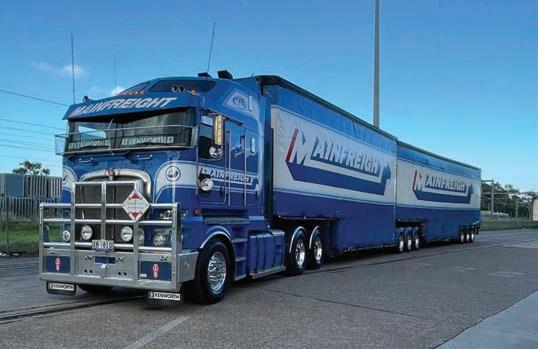
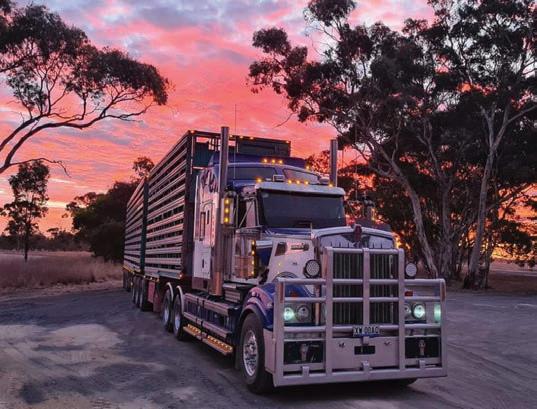







THE central Riverina town of Lockhart has once again played host to a large variety of old and new trucks with the running of its annual truck show.
Held on the rst weekend in March, the event drew attendees from as far a eld as Gippsland, Shepparton, Parkes and Sydney, with a great representation of trucks from across a number of eras.
Trevor Slater, from the organising committee was happy with the roll-up, which also drew displays from Health in Gear (a health and wellbeing organisation dedicated to truck drivers and transport workers) along with strong commercial support from a number of sponsors including Tasco Petroleum, O’Reilly Trucks and Westrac CAT, to name a few.
“We are in our 16th year, and most truck brands have been well represented here today and it’s great to see the e orts people have put into restoring a range of stu to display,” Slater said.
Indeed, the restorative skills of Peter Fitzpatrick from Wagga were recognised, taking home the Truck of the Show honours with his painstakingly restored 1970 International C1800.
“I used to have one of these on log haulage around Tumbarumba and Mannus - they were a great workhorse, and this one is just beautiful to drive.”
e event concluded with a country music concert featuring a variety of performances on the Saturday night. For further information about the Health in Gear organisation, go to healthingear.com.au.
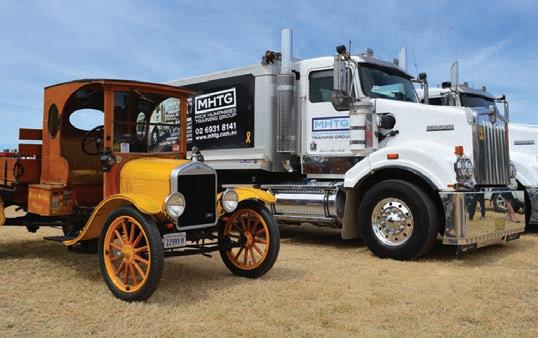








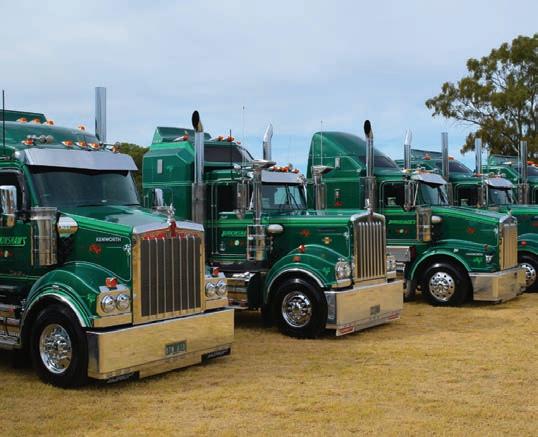








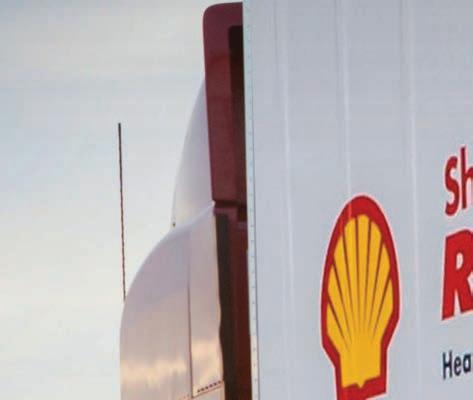








Scan

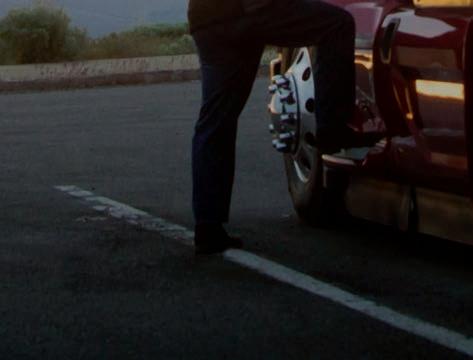
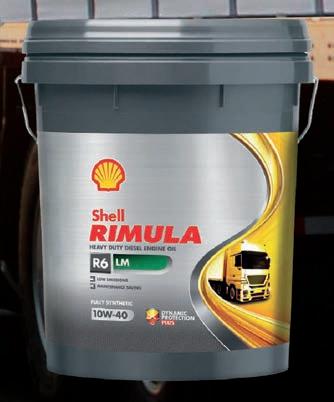








DRIVE 70km north of Melbourne and you’ll nd the picturesque town of Lanceeld with its 2743 inhabitants.
Normally a quiet little town, it has its share of weekend rubbernecks who want an easy day’s outing from the big smoke and arrive to sample the co ee shops, pub, wine bar and shops.
e last weekend of February each year also brings trucks, lots of trucks to the town’s recreation reserve. is is one of the American Truck Historical Society’s (ATHS) major get-togethers each year, and 2024 probably topped them all in terms of attendance, with well over 200 trucks – many with trailers attached, which is normally a no-go for truck shows – arriving purely for the en-

joyment of sharing stories with other club members and the public.
Not that it is easy for the public to nd the reserve, as there are only a couple of small signs on the main road through town pointing to its whereabouts and the fact a truck show is on.
is is because the council refuse to allow ATHS to put up any signage in the days leading up to the show and
only those small pointers on the day.
is stands in stark contrast to Casino (NSW) council who actively promote that town’s event. Go gure?
Be that as it may, record numbers found their way to the grounds over the weekend to soak in a history of trucking displayed by ATHS members.
ere are no awards given at these events but that




doesn’t stop the owners from presenting their trucks in pristine condition.
ey are also more than willing to talk about their truck’s history with any rubberneck who asks.
As a place to hold an event, Lance eld is at the top of the tree, mainly because there are so many shady tree tops to park under, giving relief from the sun for both owners and visitors.
Walk amongst them, admire these beautifully preserved vehicles, listen to the live music, grab a burger with the lot from the Lions Club for only $6 and nish o with a soft-serve ice-cream.
Put Lance eld in your diary for next February.
We guarantee you’ll love it. If you can’t wait that long, they run another event at Echuca in September and Ma ra in November.

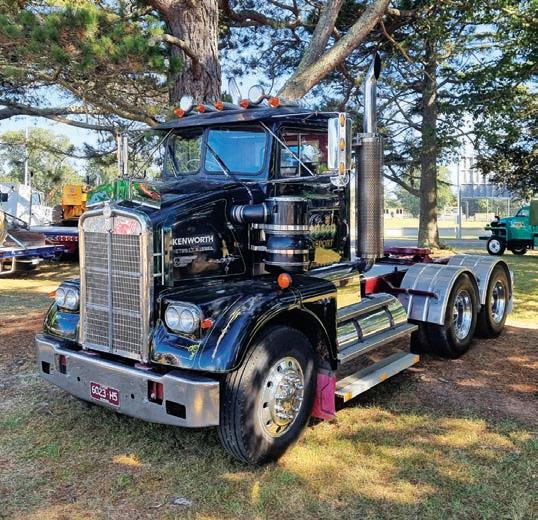

HAULMORE Trailer Sales & Rentals, having just recently celebrated 50 years of operations, has over time seen a plethora of trailer components speci ed on its builds.
As part of its manufacturing, it has developed a rapport with a number of these suppliers – SAF-Holland being one of them. Haulmore founder, Alan Moody, has dealt with the OEM himself for over 15 years.
Haulmore is a family-owned business operating out of Hazelmere, Western Australia. It began as a very small business building tippers and trays and cutting chassis in Bayswater, WA. It manufactures transport trailers as well as maintaining a rental eet of at tops, side tippers, low loaders, drop decks, water tankers, curtainsiders and road train dollies. Across these units, which are used for purchasing spare parts, service products and bits and pieces, SAF-Holland’s suspension systems are a common sight.
In Haulmore’s latest bulk tipper build for Varley Transport, SAF-Holland’s INTRADISCs were speci ed by the eet speci cally due to its light weight, excellent handling and full load capabilities.
“We discussed with the customer the best source of suspension system,” said Haulmore trailer sales and rentals general manager Justin Page. “ ey

were looking for a lightweight option for their build to minimise the tare weights on their trailers. SAF-Holland o ers the lightest axle groups in the industry, and it was deemed as the best option to go with.”
In consultation with SAF-Holland, Haulmore came up with a combination of disc brake axles and air bag suspension to suit Varley Transport’s requirements. From there, it proceeded with SAF- Holland branch manager, Terry Stott, on the build.
“We custom-designed the chassis to suit the requirements and speci cations of the axles and suspension and came up with a quality design and product in the end that the customer was extremely happy with,” explained Page.
“We achieved the low tare weight requirement that the customer had requested and that was mainly down to the weight savings that was available from the SAF-Holland suspension.”
In dealing with SAF-Holland, Haulmore gets great customer service, product support, competitive pricing and a quality product.
“SAF-Holland has great customer service,” said Page. “ eir sales team is friendly and very easy to deal with. We’ve developed a relationship from that, which is based around our ongoing support and supply of componentry.”
To obtain a lower tare weight and premium handling on its new bulk tipper combination, Varley Trans-

port speci ed SAF-Holland INTRADISCs.
For over 38 years, Varley Transport has played a major role in the agricultural transportation landscape. In this area, it provides comprehensive services for a variety of bulk agricultural commodities across WA including harvest cartage and farm-to-end-user solutions.
Varley Transport’s new bulk tipper from Haulmore will assist the business in these freight tasks. e combination will be used to service the eet’s clients delivering bulk agricultural products such as fertiliser and grain through the Wheatbelt region in WA.
Founded in 1985 by Murray and Roxy Lumsden in Varley, WA, Varley Transport has
a rich history and strong roots in the state’s agricultural and logistics sectors. As part of its operations, Varley Transport has a wide reach across several di erent sectors in WA.
“We began as a bulk fuel distributor in the Lakes Region and have grown into a trusted partner serving various industries,” said Varley Transport group operations manager, Tyron Lumsden. “Over the years, we have diversi ed our services and expanded our reach, providing specialised transportation solutions to meet the evolving needs of our customers.”
Varley Transport also delivers in providing premium haulage solutions within the energy sector, through the transportation of fuel and gas


Sales:


throughout WA with a eet ranging in combinations from single trailers to larger Performance Based Standards (PBS) and quad trailer combinations.
Operating in remote areas, Lumsden says the INTRADISC disc brake axles have revealed their dominance. “One of the challenges we face is the condition of roads in WA. We are very happy with how SAF-Holland suspension responds to these conditions.”
Varley Transport has specied SAF-Holland components on it trailer combinations since 2020, and over this period, has become accustomed to their handling and tare weight. Lumsden says the product, and INTRADISCs speci cally, suit Varley Transport’s operations with tare weight savings and durability – proven with their performance in the latest application.
“ e SAF-Holland product is simple and reliable, and it comes with good aftersales support,” he said. “We’re extremely happy with the INTRADISCs’ ride and towing capabilities.”
Due to the successful implementation of SAF-Holland’s premium INTRADISC range, Varley Transport has achieved what it set out to do –achieving reduced tare weights and ultimate suspension handling on yet another trailer combination.

•Hole
•D-Value:
•DC-Value:
•S-Load: 2.500 Kg
•Weight: 42 Kg

FAMILY owned and operated, Trailer Gates Australia (TGA) is committed to the design and manufacture of high quality, made-to-measure truck and trailer gates
– produced right here in Australia, from locally sourced steel and aluminium.
When current owner of TGA, Duncan Stewart, took over the business in Janu-

ary 2023, his plan was to really shake things up. And he’s done just that, placing a greater focus on the quality of materials used and on providing exceptional customer service.
In TGA’s biggest change to date, the company has moved away from cheaper imported Chinese steel and now exclusively uses quality Australian Bluescope Steel and Capral Aluminium for all its products.
“At TGA, we’re not focused on cost-cutting, instead we’re focused on onshoring –bringing jobs back to Australia. By building with Australian steel and aluminium, it keeps more locals in jobs and keeps the money here in Australia too,” explained Stewart.
“Some of our main competitors o er inferior products imported from overseas; and although these trailer gates might be a little cheaper at the outset, they don’t have the same level of quality and durability that you’ll nd in every gate that leaves TGA’s warehouse.”
TGA’s truck and trailer gates are typically made to order, however TGA also o ers a range of o -the-shelf gate sizes too, with no wait time.
“We provide a range of services and can custom make any sort of gate for trucks
WITHIN THE NEXT 18 MONTHS OR SO, WE’RE ALSO PLANNING ON MOVING TOWARDS ROBOTICS, WHICH WILL LEAD TO GREATER PRECISION, AND A GREATER CAPACITY TO DEAL WITH LARGER CLIENTS.”DUNCAN STEWART
and trailers from heavy duty load racks to lightweight alloy gates, or at tray tautliners. We build gates for everyone,” Stewart added. With customers located across the country, TGA ships out hundreds of truck and trailer gates Australia wide, every week.
TGA boasts an impressive list of clientele including major trailer manufacturers. Some of its major customers include Krueger, MaxiTrans, MaxiParts, Hunter Express, Drake Group, Freighter, Alltruck Bodies, Shepparton Body Builders, Beavertail Trailers, Border Express, Mainfreight, West-Trans, TR Group, NE Engineering, Combined Truck Bodies and Alma.
TGA currently employs

seven people, including highly quali ed master welders, who specialise in galvanised steel and alloy.
eir expertise helps ensure quality is maintained through every stage of the production process.
Based in the Melbourne suburb of omastown, strategically located just o the M80 Ring Road, the facility has plenty of room onsite, offering easy truck access, even for B-doubles.
In just over a year at the helm of his new business, Stewart’s leadership has already had a major impact on quality and service – and the future is looking very bright.
“It’s exciting times ahead for us here at TGA,” said
Stewart, as he revealed his next big move for the business.
“Within the next 18 months or so, we’re also planning on moving towards robotics, which will lead to greater precision, and a greater capacity to deal with larger clients. We believe that by investing in this high-tech machinery, we’ll be able to double our current output.”
TGA is ready and capable to take on new clients, including major trailer and truck body builders. Wholesalers are also welcome to contact the team.
For more information, please call 03 9465 3225 or visit trailergatesaustralia.com. au.

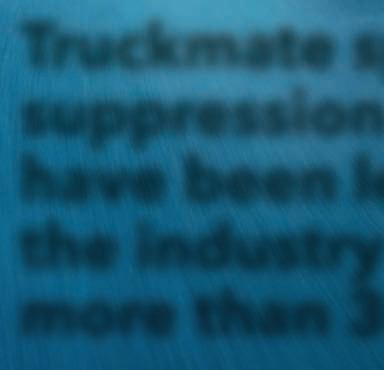

















AS we enter 2024, the perennial debate between aluminium and steel in the truck wheel industry persists. is ongoing discourse delves into the nuances of these metals, exploring their advantages, disadvantages, and manufacturing processes. As advocates of aluminium wheel innovation, we assert our preference for aluminium, o ering a comprehensive breakdown of why aluminium wheels continue to surpass their steel counterparts.
Lighter weight for greater efficiency e unequivocal advantage of choosing lighter forged aluminium wheels lies in their ability to enhance overall fuel e ciency and reduce maintenance costs. Contrary to misconceptions, forged aluminium wheels possess high yield strength and signi cant elongation, ensuring durability. Beyond being lighter than steel, they also boast superior strength and durability, increasing freight capacity and generating maintenance savings for heightened pro-

ductivity and lower lifetime operating costs.
Fuel efficiency and weight savings
Forged aluminium wheels contribute to quick payback through fuel savings, enhanced freight productivity, and maintenance savings. Technological advancements signi cantly reduce wheel weight, resulting in
improved fuel e ciency.
e Alcoa ULT36 Ultra One wheel, weighing only 16kg, exempli es substantial weight reduction, further enhancing fuel e ciency and environmental bene ts.
Maintenance advantages e maintenance advantages of aluminium wheels become evident in their re-
sistance to continuous refurbishing activities required by steel wheels. Aluminium wheels eliminate the need for rust removal, repainting, or touch-ups, providing a signi cant advantage in harsh environments.
Proprietary surface treatments, such as Alcoa DuraBright, ensure durability, reducing maintenance costs and enhancing the vehicle’s appearance.
Heat dissipation and extended equipment life
Forged aluminium wheels excel in heat dissipation, crucial in environments with frequent stops and starts, such as refuse trucks. is feature contributes to a longer tyre and brake life.
Heat indicator sensors on Alcoa aluminium wheels alert when excessive heat occurs, ensuring timely maintenance and preventing incidents.
Enhanced image and comfortable ride
Forged aluminium wheels not only bring pride to eets but also o er a smoother
ride. Being 100 per cent CNC machined eliminates runout and vibrations, enhancing the overall comfort of the trip.
Choosing between aluminium and steel wheels remains a crucial decision in 2024. While steel wheels may be initially cheaper, the increasing maintenance requirements over time should be considered. Forged aluminium wheels provide lifetime advantages, contributing to improved e ciency, reduced maintenance costs, and an overall enhanced vehicle appearance. e decision ultimately boils down
to prioritising value over the equipment’s lifespan and navigating available choices for long-term planning. In this ongoing debate, aluminium wheels continue to assert their dominance, offering a compelling solution for the evolving needs of the trucking industry.
Contact us at Howmet Wheel Systems on 1800 955 191. You can also drop us an email at alcoawheels.sales@ howmet.com or visit alcoawheels.com.au.
Also, don’t forget to follow Alcoa on Facebook at alcoawheelsaustralia for all the latest updates.







2018,
a
It has moved its headquarters to a world-class facility in Melbourne, almost four times the size of its original base in Sydney, and just signed the lease on a new 5800m2 warehouse in Brisbane.
CRL’s founder and managing director, Roy Kazamias, said he’s proud of how much the company has expanded in such a short time.
“When we started it was just me, myself and I in the o ce.
“I did one job in December 2018 and now we’re averaging about 2500 jobs a week.
“Day-to-day, I’m so focused on the company’s operations that I barely have time to think about how much we have grown.
“But it really hit me last Christmas, when we bought over 70 Christmas presents for our personnel – that’s a lot of people!”
He said one of the secrets to CRL’s success is its understanding of what the client needs.
“A lot of the success of the business has come from business development, sales and providing a solution to the clients,” he continued.
“Clients want a personal service. ey want to be able to speak to a person on the phone, not a robot.
“From speaking to our clients, we really understand what they like and what they don’t like.
“ en using that digital growth strategy, ensuring you stick to what clients want, will enable you to have fast growth.”
Having the right trailer partner has also played a key role in helping to grow the business, and Kazamias decided to go with Krueger for a number of reasons.
“Krueger is one of the leaders in the trucking world, especially for tautliner trailers,” he said.
“It’s a quality product, manufactured in Australia.
“ ey are also a family business, which is important to us because we are a family business.
“ at means we share similar values. When you’re talking about a family business, you’re talking about a business that really cares.”
Kazamias is extremely happy with their partnership so far and says Krueger have been “outstanding” to work with.
“ ey have provided a solution to us, but they have also improved our service,” he said.
“It’s not like a truck dealership where you buy the trailers and walk away.
“Every day, they are advising us on PBS con gurations and how to do things more e ciently.”
CRL currently has six

Krueger trailer combinations, with another six on order.
“ e trailers have awesome specs, and their durability is amazing,” Kazamias added.
“Our forklift drivers also say they are very easily handled.”
Over the past few years, Krueger has been supplying 34 pallet Double and Single Drop B-double Kurtainers to CRL, which has enabled the business to take on larger scale works.
In addition to their warehousing facility, this has put them in a place to be a major player with customers looking for large volume freight.
“It’s the type of trailer that you can get over 110m3 on, easily,” Kazamias said.
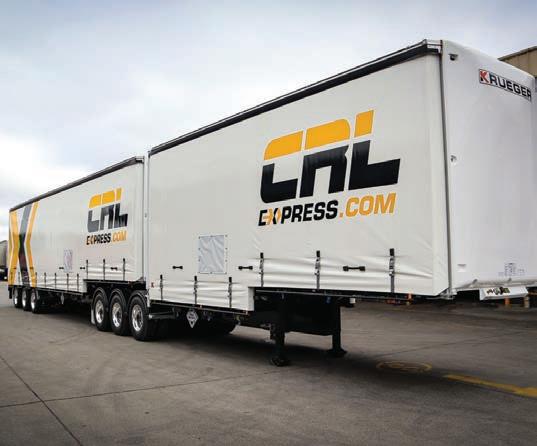

“ at enables us to cart more freight and more volume.
“Obviously, more freight equals more volume and more revenue on a vehicle.
“ at enables us to move forward with better credibility, and more money can go back into the business.”
George Athanasi, national sales manager at Krueger, said that understanding the loads carried by CRL has helped them to provide the right trailers for their needs.
“Capacity has been the biggest thing so far,” he said.
“ e next is to understand the load so we can recommend things such as our patent Slide-A-Gate system,
or load restraint curtains that make both the trailer and the load safer.
“Understanding what they are carrying, and how much, has been the most important part of the process.
He said that Kazamias has very speci c requests for CRL’s assets, which is not uncommon.
“Obviously, we promote and push Krueger OEM as much as we can but at the end of the day, we have great relationships with all suppliers in the market and can provide whatever combination of axle, fth wheel or landing legs to the needs or wants of the customer.”
He added that the future is bright for CRL and Krueger’s partnership, with some bigger combinations on the horizon.
“As CRL has really pushed in the 3PL space with a world class facility based in Melbourne, we can o er larger capacity combinations with our B-triple and AB-triple PBS road trains in the future, and maybe even our dry van B or RollBack A B combinations that we look to push further this year,” he said.
“As Roy and CRL Express continue to build their business, Krueger will be there all the way.”




WE talk to truck drivers about this every single day. You wouldn’t dream of asking your car tyre tter to just balance the family car or ute’s front wheels; so when it comes to your “o ce”, the “workshop” or your “income earner” – the rig that is paying for the home loans, kid’s education and the truck itself, week in and week out – it’s a hard yes! to balancing the rear wheels too.
A machine that’s worth near or possibly more than $1,000,000 attracts a lot of costs. Fuel, additives, nance (principal and interest), de-
preciation, driver costs, tyres, maintenance, service, insurance, registration, depot hire, the list goes on and on, and most are recurring costs. Consider a one-time-only purchase of Atlas Balance Rings – marginal in comparison to other costs of owning a truck (between $300 and $330 per wheel) – that removes shakes, rattles and friction that is kicking back into your shocks, steering components and then along the chassis into the cab where you or an employee is sitting. ousands of our customers attest to saving up to 50 per
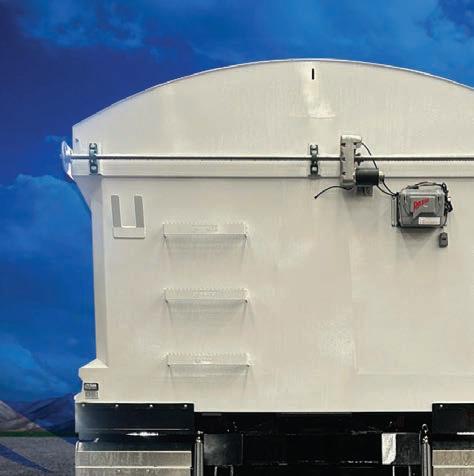

cent on tyre costs, and up to 7 per cent on fuel. After selling the truck, or when the lease is up, you remove the balance rings and take them onto the new rig.
e liquid in the balance rings, unlike anything else on the market, moves by the microsecond, adapting to every section of the road your rubber is touching. Drive from concrete to bitumen and then corrugated dirt, cattle grids, and dirty muddy paddocks.
e duals on your drives and trailers will have dirt, mud, and minuscule bitumen particles in the tread. Possibly, your
tyres could also have icked o a bit of rubber due to the rough road. But the liquid in the rings is always changing to suit your driving conditions.
How does a fully balanced rig (steers, drives and trailer tyres) save on fuel? Because those wheels that were unbalanced, are now rolling along, not ghting against each other, nor bouncing up and down and left to right. If a steer tyre needs to be balanced, then why not a drive or trailer tyre?
One of our retail distributors demonstrated proven savings on fuel with a study that DRT in Geelong undertook on their new FTE quad fridge van running from Sydney to Melbourne. Initially, just tting balance rings to the steers, they noticed the di erence, so went ahead and tted the drives. Matt from Big Wheels Geelong recommended the trailer be balanced as it was four months old. at rig has now not only improved its handling but has come down in fuel use by 60 litres every day. e maths clearly shows Atlas Balance Rings not only pay for themselves in tyre life savings, within the rst set of



tyres, but also, in fuel consumption.
ose two reduced-cost centres alone are the start of a more economical business model. Imagine the other savings the rings bring to running gear within the driveline including bearings, shocks and more.
If you have a tyre tter tell you balance rings are just for long-distance rigs or prime movers; that’s simply not the case.
Many around-town operators like Taxibox have un-
dertaken their own fuel and tyre savings studies. Balance Rings work the same under any conditions – from logging rigs, side tippers, buses, fertiliser spreaders, cattle trucks to fridge vans, line haul or taxi trucks.
Best of all, if you don’t like the rings for any reason, you can give them back, as there’s a 365-day money-back guarantee and a ve-year product warranty.
For more information, visit atlasbalance.com.au or call 1300 228 527.










SINCE tting Hendrickson’s load-based tyre pressure control system, the TIREMAAX PRO-LB, this Victorian transport operator has noticed a huge di erence in tyre life.
Based in Inverleigh, Victoria – less than 30 kilometres west of Geelong – STS Bulk Haulage specialises in the transport of hay and grain.
e company predominantly delivers to grain sites during harvest time, with much of the work being into the Geelong terminal at this time of year.
Owned and operated by Steve Setterini, the business
was started in 2002 and now runs a eet of ve trucks, which travel mainly throughout Victoria and into southern New South Wales.
e trailer eet consists of A-double and B-double tippers, along with four sets of drop decks for carting hay. Due to the nature of the work, Setterini says his trailers typically run empty about 30 per cent of the time – and therein was the attraction to the TIREMAAX PRO-LB. e system automatically adjusts the trailers’ tyre pressures based on whether the trailers are empty or loaded.
Hendrickson o cially launched the TIREMAAX PRO-LB at the Brisbane Truck Show last year for the Australian market.
e TIREMAAX PROLB controller uses air spring pressure to determine axle load and adjust the output accordingly to optimise tyre pressures across various loading conditions to help improve fuel economy and extend tyre life.
e system builds on the capabilities of its predecessor, the TIREMAAX PRO, to automatically adjust trailer tyre pressures across changing climates (hot and cold,
at sea level and altitude) and loading conditions (empty or loaded) for a better trailer tyre contact patch and improved performance.
Setterini already had the previous iteration of the system, the TIREMAAX PRO, tted on his existing trailers, so decided to try Hendrickson’s newest o ering in this space when he purchased his newest trailers.
“It was nearly ve years ago that I rst started using the original TIREMAAX PRO. I was one of the rst customers to have that original system on a set of tippers,” said Setterini.









“All the tippers in the eet are tted with the TIREMAX PRO system but the latest ones have the new system, the TIREMAAX PRO-LB which in ates when loaded and deates when running empty.”
STS Bulk Haulage is currently running a Kenworth T659 A-double and Kenworth Legend 900 B-double with the TIREMAAX PROLB system, with trailers manufactured by Chris’s Body Builders. Both combinations have been on the road now for about two years.
“I’ve de nitely noticed a big di erence on the tyres, with more even tyre wear and

less scalloping,” Setterini said.
“We’ve still got some of the original tyres on those trailers now and they’ve done about 300,000km. We do a lot of stop-start and tight turns and that sort of stu in our line of work.
“Before we were lucky to get 200,000km out of our tyres or just over that as the maximum.”
With Hendrickson’s TIREMAAX PRO-LB having already proved its worth for this small eet operator, Setterini says he wouldn’t hesitate to have the system tted to any new trailers he purchases in the future.


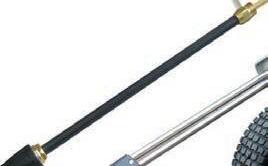

















SOMETIME ago a wise eet owner gave the QTA some free advice when commenting on the problem with our road system, stating, “ ey build roads for cars and let trucks use them.” ese are words that the Association often uses when talking with bureaucrats about funding for roads and bridges.
Is it beyond reason to think that the government might build roads for trucks that cars can also use? What does it take?
It is the QTA’s view that it is possible through considered
consultation and collaboration between road managers and industry.
e QTA has already experienced that this model works through the engagement being undertaken with Queensland Transport and Main Roads on the Cunningham’s Gap Reconstruction Project (CGRP). Funded by the Commonwealth-State Disaster Recovery Funding Arrangements, extensive industry consultation with the CGRP Project Team has meant that truck use is paramount in the restoration

design of this major national freight route.
How do we get more of this happening? is is where the professional advocacy of the QTA comes in. With so many industries competing for government spending, the QTA is making sure that investment in roads and bridges is at the forefront of the minds of politicians. Another part of the role is to get eet owners onboard, o er opportunities to discuss on-road compliance and access issues with road managers and engineers so they can make more informed decisions that will bene t with improved safety and productivity and not impede the road freight industry.
To support this, the QTA is rolling out Road Freight Forums around the state for eet owners. Bringing TMR, NHVR, local councils and QPS together, the purpose is to drive regional solutions in a collaborative way.
e rst forum will kick o in Cairns on March 14, followed by monthly forums across Queensland up until August.
Registrations are open to all
businesses who own and operate trucks as part of their business and who need support with any regulatory, access or compliance related issues.
e QTA is an unwavering priority advocate for increased access for multi-combinations and establishing an all-weather national freight route in Australia. e importance of this has again been put into focus over the summer with the impact of cyclones, oods and res. e term ‘Groundhog Day’ is an understatement on this issue.
What we know is that many times during each year in this country, road access is regularly cut by oods and res. What the industry is asking for is that decisions around road and bridge infrastructure investment be viewed through a strategic lens to create a freight network rather than a road-by-road or bridgeby-bridge scenario that only solves an issue here or there in a region.
In Queensland, approving more access for high productivity combinations and upgrading key bridges in regional areas will connect the arter-

ies that feed onto the Inland Freight Route, taking tra c o the ood prone Bruce Highway.
With a Queensland Election coming up in October, the QTA will be consistently and strategically advocating the importance of the road freight industry to Queensland’s economy and the wellbeing of communities.
Be a part of the activities of Queensland’s oldest industry association for road freight and work towards increasing the importance of the role the industry plays in keeping the state moving and
supporting the wellbeing of our communities.
For more information, visit qta.com.au.









THROUGH using the O oad platform, founder and CEO of Brisbane Transport, Gary Badesha has experienced phenomenal growth – expanding from a two-truck to a 26-truck operation in just 12 months.
Badesha started his business in September 2021, with two trucks being used to cart ad hoc loads. at was until he
signed up to the O oad platform in February 2023.
Brisbane Transport now handles a variety of freight, specialising in FTL (full truck load) and LTL (less than truckload) linehaul work on the east coast.
“I originally found out about O oad through another company I used to sub-con-

tract to. It was a pretty easy platform to join. I only had two trucks at that point,” Badesha explained.
O oad is a digital freight platform, connecting shippers and carriers. Launched in 2020, the founding team saw a huge opportunity to remove the ine ciencies a ecting the trucking industry. O oad now works with hundreds of customers who move freight across Australia.
Since joining O oad, Brisbane Transport has shipped 7500 loads across a range of shippers, covering FTL and LTL, with contracts for companies like Kimberly Clark and other leading FMCG brands. e modern truck eet of Volvo FH16 Globetrotters and Mercedes-Benz Actros is complemented by 26 sets of B-doubles, including high cube trailers, drop decks and straight decks.
Badesha attributes his company’s phenomenal growth to the support he’s received from the team he works with at Ofload.
“ ey’re really good with communication and also gave me the con dence to buy
specialised trailer equipment.
ey already had a contract with Kimberley Clark, which makes tissue paper, toilet paper and paper towels. As that contract expanded, they asked if we wanted to expand with it. So, there was that opportunity to grow with that contract,” he explained.
“O oad is also really simple and easy to navigate around. Drivers are given a pin number for each job and when they key in that pin number, all the details for the job come up.”
In using the portal, Brisbane Transport has also been taking advantage of O oad FastPay, a service provided by O oad where its carriers get all invoices paid within 48 hours of submitting proof of delivery. is is instead of the usual 30-45 days and as a result, has strongly improved cash ow. ey have now implemented this across the business and get twoday payments even for deliveries not made through O oad.
From an administrative point of view, Ofload has cut out much of the paperwork too. “ e technology has really helped us to get on top of our daily operations. e way the

portal is set up saves us a lot of time in administration. Drivers can upload job details through the platform and then we can access all of those,” Badesha added.
O oad has also helped Brisbane Transport secure truck and trailer nancing, as well as cheaper fuel through the United Petroleum discount fuel cards.
“ e fuel discounts are really good. ey issue a fuel card
through United Petroleum and all O oad carriers can access that discount. Because O oad is such a massive carrier, they were able to negotiate a better fuel rate for their customers,” Badesha said.
Looking ahead, Badesha says he’s hoping to continue growing the eet.
“We want consistent and sustainable growth – which is mainly focused on customer service and compliance.”








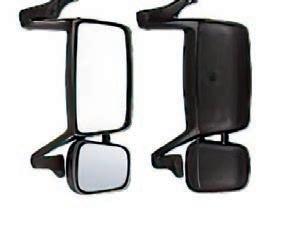




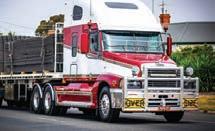

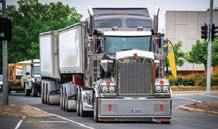
I FIRST met Tayt Johns back in early 2023 when i started my truck photography page so it’s only tting to include his story in my Big Rigs column.
Watching his journey along the way has been great from a photographer’s perspective given the personal touches he has added to the truck. Tayt has been driving trucks for 2.5 years and if he has it his way, I think he will be in this for the long haul.
He is currently driving a Freightliner Coronado with at tops with PJT. Usually, carting steel or concrete pits all over the country.
Tayt’s trucking journey started when he was just a couple of weeks old when he used to jump into the truck with the old boy travelling up and down the Hume.
en, as he got older, skipping school and learning how to use a logbook and restrain loads.
As a part of my stories I also like to nd out the driver’s favourite food stops.
For Tayt, there are a few roadhouses he regularly visits, e Tuckerwagon at Moorland, NSW, BP Camperdown, Victoria, and Wimpys Wodonga, Victoria, for a rump steak or ‘parma’ and the occasional mix grill.
When it comes to advice for the next gen drivers, Tayt recommends always asking questions and ask for help when you’re not sure of something.
“I’ve learned a lot by asking fellow drivers about things such as tarping or a better way to restrain a load,” Tayt says.
Away from the job, Tayt spends a lot of his time out in the high country of Victoria with the 4by/dirt bikes while sinking cans by the re. His dream truck is a Ford LTL9000 Aeromax which was the truck he grew up in as a kid.








He may have started his working life laying carpet, but David Wall has never looked back since switching to truck driving at 35.BY DANIELLE GULLACI
DAVID Wall’s story is a little di erent to many of the truckies you’ll nd pulling road trains across the country’s vast and varied landscape.
For Wall, 54, the fascination with trucks started when he was just a little kid but he chose to take a very di erent path before nally pursuing his passion.
Wall grew up in the suburb of Geebung in Brisbane and recalls fondly, “I was that obsessed eight-year-old kid on the side of the road getting all the truckies to honk their horns as they drove past. And I was buying truck magazines when I was nine.
“Dad was an accountant and my brother became a policeman, so I guess I’m the odd one out.”
A family friend – a truckie who came here from the Netherlands and worked brie y as the school bus driver – helped to further fuel Wall’s interest in driving trucks.
“He’d let me drive the school bus from a few kilometres down the road, with 50 screaming kids in the background. at was until the school principal found out!” said Wall.
“He came here with all intentions of driving trucks. It was back in the ‘80s. He ended up buying his own truck so I got to go with him in the old SAR road train from Brisbane to Perth, with no air conditioning. And that still didn’t put me o .”
Wall’s parents told him that if he wanted to drive trucks, he needed to get a trade rst and he obliged, becoming a carpet layer. It was a role he continued in until about the age of 35. “But there wasn’t a day that went by that I wouldn’t take my apprentice to the truck stop to go and eat lunch,” he laughed.
“ en it got to a point where I thought I’d give it a

crack. No one would give me a go because I didn’t have the experience, so I bought my own truck.”
Together Wall and his wife built up their own little transport business, operating a small eet of new Kenworths that would run interstate. “We had trucks running bananas between Brisbane and Adelaide and road trains running Wollongong to the mines in Mt Isa,” he explained.
As the couple built the business up, Wall continued on the road while also running the business. “Once I started on the road, I never stopped driving,” he said.
“We had that business all through the global nancial crisis but eventually it became impossible to keep going,” he said.
Up until that point, Wall had been self-employed his whole working life, but decided it was time for a change. He sold up the eet and got a job as a road train driver with Hillman’s Transport. at was about 10 years ago and Wall says he hasn’t looked back.
His run is the 6300 ki-
lometre round trip from Toowoomba to Darwin, from behind the wheel of a brand spanking new 2023 Mack Super-Liner, pulling a triple road train.
“It’s very hard to complain about a brand new truck –it’s a beautiful truck to drive.
ey replace their trucks every couple of years, so you’re never in an old truck,” explained Wall.
“I cart mainly general freight and bring back mangoes, prawns and all sorts of things. I’ve done that run for a few years now. Before that I was running out to Moomba along the Strzelecki Track.”
According to Wall, Hillman’s is a great company to work for. “I know my job and they know I do my job, so the only phone call I ever need to make is if I’ve broken down. But at the same time, with Steve Hillman who runs the company, you can ring him any time you want, and he’s always quite responsive to our needs.”
Family owned and operated, Hillman’s runs a eet of about 50 trucks and has just recently built a new depot in Charlton.

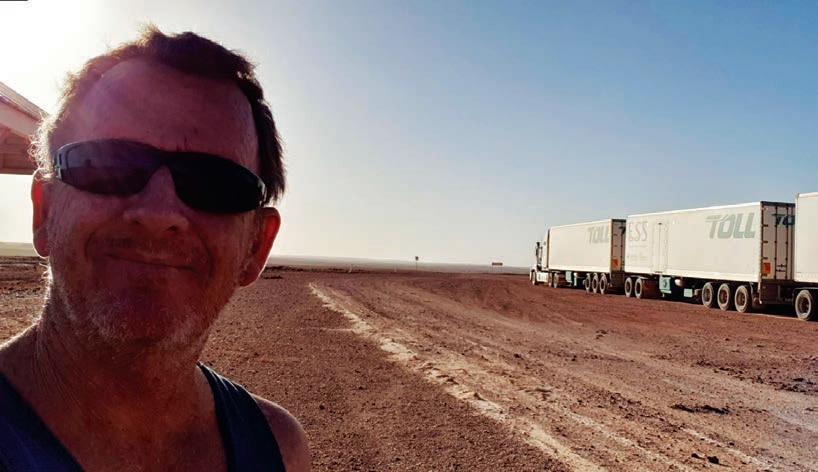

Wall says he absolutely loves the Toowoomba to Darwin run, which takes about six days up and back. “It’s probably about 85 per cent of the trip that’s spent in the wonderful outback of Australia, where there’s hardly anyone around. I’m driving through Camooweal at the moment. I’ve been on the road for the past three hours this morning and I’ve only seen one other person.”
ough when asked
about the condition of the roads, he describes the 1000-kilometre stretch from Toowoomba to Longreach as “a complete disaster”.
“ at road has been like that forever. It can be terrifying sometimes. ere’s always a hole that wants to put you in the paddock!” he said.
“I had previously done a lot of Brisbane to Sydney trips but always felt like there was something missing for me. When I started do-

ing the outback runs, I knew this was where I wanted to be, driving these big road trains – they’re the biggest trucks on the planet and I still nd the whole thing so surreal. Even though I’ve spent well over 1 million kilometres doing this, I still really enjoy it.”
Working at Hillman’s, Wall added that he’s also enjoying the fact that there’s a greater level of work/life balance. “ ere was a point where I was doing the desert stu where I hadn’t had a weekend o for two years. I hadn’t been able to sit down and have a barbeque with the people I cared about for years,” he said.
“ e long hours can be hard but now when I come home, I get quite a few days o . is is the rst time I’ve ever had a couple of weekends o every month.
“It means I can spend more time at home with my kids, catch up with friends and enjoy their company. Most of our lives, my wife and I have had acreage, so we’ve got horses, cows and there’s often stu to do out in the shed, so that keeps me busy too.”
















The owners of Mundrabilla Roadhouse in WA know how to look after drivers as they have their own trucks on their nearby cattle station.
Colin and Brie Campbell have run the familiar roadhouse since late 2022 and it has been described as a great place to stop by numerous drivers.
Its description is an “Oasis in the Aussie Outback”.
The roadhouse is located on the Nullarbor Plain, 1363km from Perth and 644km east of Norseman via the Eyre Highway, and 1331km from Adelaide.
Spy spoke to Brie who said at least 30 truckies on average a day stop there for fuel, a meal, or to use the toilets and showers. It’s open from 6.30am to 10pm.
“Our daughter also works at the roadhouse and we have eight staff, many of whom have been here a long time.
The favourite food for truckies is steak, veggies and chips but they also like the burgers.
Everything is home cooked and some days we get more than 30 trucks here. The parking area is often packed,” Brie said.
“It’s been fabulous to have the support from so many regular truckies and a great tourist trade. Being a family owned and operated business, it means a lot. Mun-
drabilla Roadhouse is a busy restaurant/cafe, bar, motel, caravan park and fuel station half way between Adelaide and Perth. We are about to undergo a major fuel upgrade which will be starting next month,” she said.
South Australian driver Lynton Bruce was glowing in his praise of the roadhouse.
“They are really friendly people and serve up good meals at reasonable prices,” he said.
Sleeping on licence loss
Are many drivers around Australia who suffer from sleep apnoea hiding that condition for fear of losing their licence and potentially their livelihood?
This is a subject that many drivers around this vast country who may suffer from it won’t discuss publicly.
That is the scenario Spy comes across quite regularly whilst travelling around and speaking to many truckies every year.
And I come across this in every state.
It is a highly controversial matter.
You have to weigh up the safety aspect compared to the possible loss of a job.
On one side of the matter, who would want somebody who falls asleep at the wheel maybe crossing into the oncoming lane and killing or injuring an innocent per-
with Alf Wilson Spy on the Roadson or more.
But the flip side is that the loss of income when banned from driving will have a dreadful financial and emotional impact on the driver and their family.
I was diagnosed with it many years ago after falling asleep at the wheel at 8am whilst driving.
Luckily, I swerved to the left and stopped in a paddock and no damage or injury was the result.
But people came running from all directions to see if I was okay which forced me to seek medical attention.
Soon I was diagnosed with the condition and spent a night in the sleep disorder ward of a local hospital.
Not a pleasant experience with probes attached to parts of your body and a nurse observing your sleep pattern from a nearby room.
But I ended up purchasing a ResMed machine and whilst it was very uncomfortable for the week or two, you get used to them.
Since placing the mask onto my face every night I have slept like a baby and have never had any problems with sleep apnoea again.
Bad roads under the spotlight Drivers often contact Spy with reports about bad roads they negotiate during their travels to keep Australia supplied.
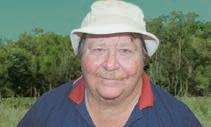

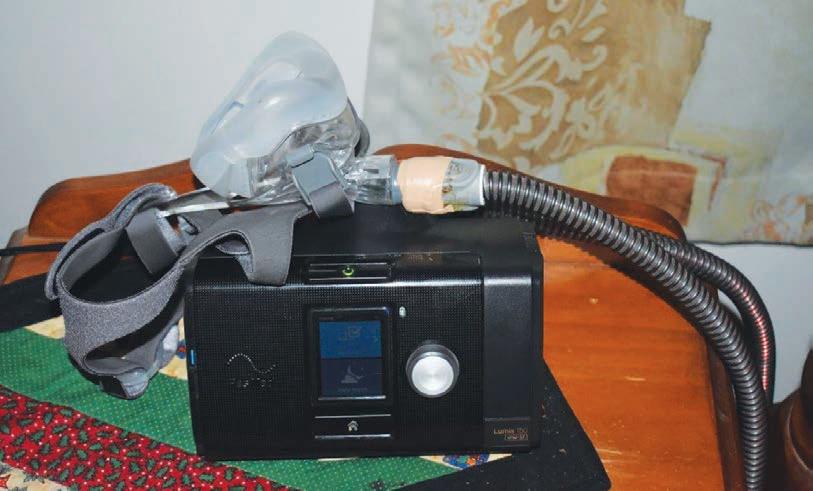
Sections of the Newell Highway in NSW between Gilgandra and Coonabarabran have come under the spotlight.
“They have done some work on it but it is a band aid fix as a few months later it starts breaking up again,” one veteran NSW small fleet owner said.

The Coonabarabran to Moree stretch is another road which many drivers reckon needs urgent attention.
In Queensland parts of the Gore Highway between Goondiwindi and Millmerran have been a focus.
Along with the Miles to Goondiwindi section of the Leichhardt Highway.
Ferry crossing
Vehicles heading to the top region of Cape York in far north Queensland, including many trucks, must cross the Jardine River on a ferry.
The Jardine River is 66kms from the tip of Cape York and in the dry season many trucks supply remote communities such as Bamaga, Injinoo, New Mapoon, Umagico and Seisia.
The ferry is operated by the Northern Peninsula Area Regional Council (NPARC).
NPARC chief executive officer Kate Gallaway has told Big Rigs that crossing times for the Jardine Ferry during 2024 as from May 1 to October 31 will be from 7am until 6pm, and between November 1 to April 30 from 8am until 5pm.
“Council cannot operate the ferry out of hours due to operational reasons for staff and public safety which includes managing high risk of
fatigue, night-time driving hazards, nocturnal wildlife movement and road conditions,” said Gallaway.
“A number of staff are required on site to operate the vessel safely and in accordance with compliance requirements. This does not impact on people who need to access the ferry in case of emergency by contacting 000.”
Travelers are encouraged to plan their road trips ahead to ensure they arrive during opening hours or be prepared to camp at the Jardine River Campsite.
“During the NPA region’s busy tourism period between the months of May to October the Jardine Ferry can have significant delays due to the large volume of travellers enroute to the tip of Cape York. All vehicles must make sure to arrive at the ferry by 4pm to ensure a timely crossing of the Jardine River and avoid missing the ferry closing time,” she said.
During the wet season which generally occurs between the months of November and April, the regions can experience heavy rainfall, sometimes causing flooding and/or land slips, which can isolate communities, industries and travellers.
As a result of this flooding, roads can be affected by be-


ing cut off or washed away.
Roads that have been flooded must be carefully managed. To do this, road closures, load restrictions and traffic management may be implemented to protect the road asset and balance access for communities and industries.
Main Roads provides regular updates to RACQ about road conditions on the network in Queensland.
The road is mainly red dirt with lots of corrugations and during dry periods it is regularly graded.
When it is closed, freight and supplies are delivered to the communities by sea and to a lesser degree by planes.
From truckie to motorhome
It is common knowledge that many of our truck drivers often criticise the habits of caravan travellers when they meet along the highways.
So, it is with great interest for old Spy when long time truckies take a break and tour the country in a caravan.
One such truckie is Trevor “Dippy” Southern who recently took a break from his home at Cardwell in north Queensland. His journey was reported to me by a small fleet owner from NSW.
“Dippy has been on a trip in his van through Queensland, NSW, Victoria and over to Tasmania,” my informant said.
When I phoned Dippy to get an insight into his epic trip with his wife Helen he was at a loss to glean who actually passed on the “good oil”.
But being an investigative type himself Dippy soon worked out it was an old mate he knew from his early days in Victoria.
“I went with Helen in our Mercedes motorhome and came across many truckies and I found them all very courteous. Some of them who were travelling in front of me even indicated when it was safe to overtake,” Dippy said.
Dippy went across the Bass Strait in the Mercedes on the Spirit of Tasmania boat and when in the Apple Isle travelled around, visiting places like Strahan, Smithton, Port Arthur and negotiated most highways.
“There are not many rest areas in Tasmania but then again the distances between places isn’t that far unlike the mainland,” he said.
One highlight for Dippy was having a meal at the Southport Hotel in Tasmania
which is regarded as Australia’s most southern truck stop.
“It was a very good meal there and we camped in the motorhome near the beach and the view was sensational,” Dippy said.
Dippy added that the overall truckies he came across were good people who observed safety.
Many retired truck drivers are enjoying life in a caravan and getting to travel this vast country and relaxing.
So despite the criticism of many truckies about caravan drivers such as taking parks in rests areas and bad driving habits, Dippy’s overall report card gave the ones he saw 10 out of 10.
Rodent plague
SOS to the Pied Piper. Reports are “swarming” to Spy about plagues of potentially disease carrying rats being seen around Queensland towns such as Longreach, Kynuna and Julia Creek.
They have appeared after recent floods and a scientist has described them as being from a bush species known as Rattus villosissimus.
They feed off grass and apparently are less frequent in dry times.
Truckies have told Spy that they have seen hundreds of



the rodents during their travels near the towns or when stopping at rest areas.
“There were many of the rats on the Flinders Highway near Julia Creek when I drove through there one night this week,” one long haul driver said.
Campbelltown trucks
The Halfway Café located at Campbelltown along Tasmania’s Midlands Highway has
been popular for truck drivers to stop at, especially early in the morning well before daylight.
Owner Janet Candy is well known amongst truckies in the Apple Isle.
Candy is also a keen photographer and snapped some pics of trucks which had parked across the street.
“Just spotted all these lovely Macks, whose drivers popped in for a bite of lunch. They

were on their way to Exeter for the Mack show,” she said. Whilst in Tasmania recently I stopped off there and was served by Candy and her assistant Jaimee Streets.
The food was excellent, and the service was great and Janet asked me about long time Big Rigs writer Jon Wallis who is now semi-retired.
She said Jon used to pop in there to get a coffee when he travelled the Midlands.
Drinks are on me
A truckie found himself a good Samaritan when the auto teller machine and Eftpos went down at a local watering hole he frequents.
This is a popular haunt for numerous off duty drivers and the lad was the only one who had cash.
All the others usually pay by card so this champion ended up shouting drinks for thirty drivers.
All promised to “return the shout” next time they saw him.
One of the fellows left after a few drinks and returned later to pay back our man after he obtained cash from a nearby store.
Spy saw a statistic which indicated that only 13 per cent of people pay by cash, with cards a preference for the rest. However, it does “pay” –pardon the pun – to keep some money in the wallet as this incident shows.
Janet Candy and Jaimee Streets at the popular Halfway Café. The ferry that takes vehicles across the Jardine River in the far north. Image: Michael Namok/NPARC The Jardine River is 66 kilometres from the tip of Cape York. Image: Michael Namok/NPARC Trucks parked in Campbelltown, on the Midlands Highway in Tasmania. BY ALF WILSON
BY ALF WILSON
DARWIN born
DomenicoFarina, recently secured his heavy rigid licence, which is a perfect start for the 22-year-old who is interested in gaining as much experience as possible in as many fields.
“I have had a fascination with getting licenses and now have one for a truck to go with others, including operating a boat, jet-ski, car and motor
bikes,” he said. A full-time science teacher at a local high school, Farina now drives his father’s trusty Ford Trader truck which is parked at his parents’ home about 1.5km away from where he lives in a quiet Townsville Street.
“I enjoy driving the old Ford which has 182,000km on the clock and is a 1995 model with a six-speed gearbox. Having a heavy rigid license now enables me to get a job down the track
as a truck driver,” he said.
In the meantime, super-fit Farina is looking to snare a part-time job driving a truck in cane farming, or some other industry.
“I would love to get parttime work driving a dump truck, bus or even just transport. Dad has been doing all sorts of jobs for years and having the truck makes things easy when my entire family gets up to so much,” he said.
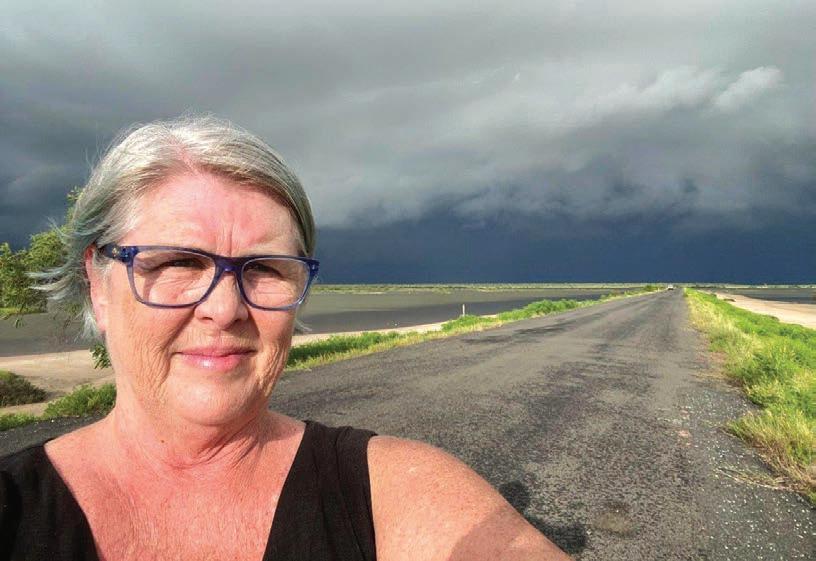
Christine Howes, who lives in Cairns, has had a HR license since 1983 and has only used it once. But she keeps renewing it as in the not-too-distant future she hopes to get a job driving a truck or bus. She works as a media consultant and maintains the HR licence for a “rainy day”.
“I got my HR license in secret from my family in 1983 – more than 40 years ago. My dad was ready to blow a gasket or two when I told him, but a long-time family friend literally stepped in between us and congratulated me. Her son, who was a remov-
alist, had been trying to get his for several years but couldn’t pass the test – she was amazed I had got through, explained Howes.
“They took one look at my slender-self and asked me to take the tray off instead of reversing around a corner, which would have failed me,” she told me.
Howes said the crusty old truckie who taught her in a big old International with crash gears effectively talked her out of working as a truckie.
“At the time there were not many rules and no log books, the pressure on drivers to haul long hours was enormous. As a result of that, I’ve moved in other di-
rections but I did use it once.
“A driver we had lined up dropped out of transporting ANTaR’s Sea of Hands from Sydney to Cairns and back again. I did it in an 18t Pantec hire truck. It was a helluva drive in May 1998. I haven’t used it since, but I’ve sure as heck kept it, and just the other day I applied for an authorisation which means I can drive a people bus if I want to. I just thought it would be useful as a volunteer sometimes.
“It’s my back up plan, but at this point I’d probably rather do the bus thing – on Cape York, of course, and talk to people,” she said.
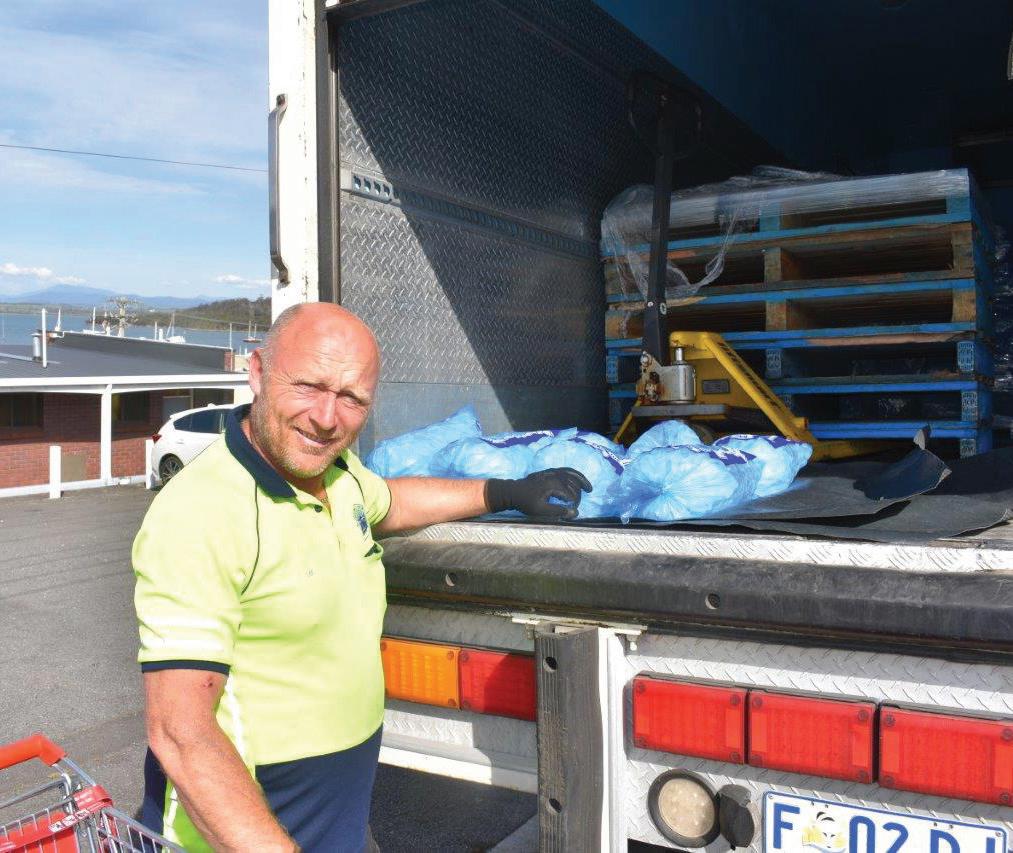
ENJOYING views that many drivers would be envious of and working for a great company are two of the main reasons that Lee Hendley loves his job.
That is not surprising as when I saw Hendley about 4pm, he was delivering ice to a business near Beauty Point in northern Tasmania.
In the background when I snapped his pic unloading from the back of his light rig was a scenic view of the mighty Tamar River.
The 47-year-old is em-
ployed by Mountain Dew Ice based at Port Sorell in northern Tassie and delivers frozen goods and ice around one of the most beautiful regions of our vast country.
He was driving a refrigerated Iveco and said he was so happy in the job.
“I get to places like St Helens and Scamander on the east coast and also Beauty Point here beside the Tamar. Each day I get great views,” he said. St Helens and Scamander are also beside the water and
also are very scenic towns.
A truckie for the past four years Hendley said he doesn’t have any preferred hobbies and he lives at Latrobe, just off the Bass Highway.
It was very chilly when I saw Hendley and despite the generally cold weather in the Apple Isle, ice is in big demand.
Most people like a cold beer or soft drink and Hendley delivers lots of it.
What better way to enjoy a cold amber fluid in a cold climate sitting beside a fire.
Domenico Farina enjoys obtaining various licences to further his skills. Christine Howes on a road near remote Pormpuraaw.
ROAD transport is a pragmatic industry; however, it is also often set in its ways.
Embracing new ways of doing things is - understandably - not a priority when you are running a small business and primarily concerned with keeping your head above water.
Taking our system of road access permits to the next level while eradicating red tape is something that should not cost operators much more than an investment of time.
I have not spoken to anyone who thinks the introduction of a National Automated Access System (NAAS) will be a bad thing.
e system would be based on the Tasmanian Heavy Vehicle Access Management System (HVAMS)


where freight routes are comprehensively mapped and available online.
HVAMS automates the road and structure assessment functions of road managers when they make heavy vehicle access decisions.
It is smart enough to use a vehicle’s characteristics, such as axle spacing and mass distribution, to determine the most productive combina-
tion for a particular freight task, based on speci c information it holds about that route.
Heavy Vehicle National Law (HVNL) currently requires road managers to formally consent to operation of a Restricted Access Vehicle (RAV) on their roads before a permit or notice can be issued.
e principle of empow-
ering local governments to ensure safety for all road users on roads they manage is sound. After all, they manage 77 per cent of Australia’s roads by length. e downside is that the permit system produces long lead-times, inconsistencies, and bureaucratic delays.
Since HVAMS was introduced, the number of permits Tasmanian road man-



agers have issued for Special Purpose Vehicles dropped by 98 per cent. is looks like success.
Imagine the bene ts nationally.
Improving access for more productive heavy vehicles and completing the freight task with modern trucks, and fewer vehicle movements, is a key economic reform opportunity
for Australia.
Fewer trips will drive decarbonisation and improve network e ciency and safety. at is good for operators, good for other road-users, and good for the environment.
ere are many agencies who need to be involved in making a National Automated Access System (NAAS) happen, including Austroads, the National Heavy Vehicle Regular (NHVR) and transport departments. We must ensure any new system builds on the strengths of HVAMS.
It is a big task because of the number of roads and bridges involved. However, the savings in time, e ciency, reduced emissions, and safety, would be substantial.
Now is the time for the federal government to lead the way on this essential reform.
e treasurer should provide extra funding in the May budget to accelerate the process and take state, territory, and local governments with it.



 INDUSTRY ADVOCATE
INDUSTRY ADVOCATE

THE series of prosecutions arising from the tragic April 2020 incident on the Eastern Freeway in Melbourne where four police o cers were killed after being hit by a truck have almost concluded.
ere are lessons in what happened, and the subsequent prosecutions, for everyone in the transport and supply chain industries. Making it even more compelling is the fact that three of those lessons are ground-breaking legal developments.
What happened?
e driver of the truck that caused this tragic loss was later found to have been substantially impaired by fatigue and illicit drugs. is nding led to a major investigation into the Chain of Responsibility (CoR) safety practices of the business that engaged the driver and its executives.
e investigation revealed that, over a period of at least seven months, the business had systemically failed to manage the risk of fatigue arising from their operations.
As a result, many of the key players in the business were charged with various o ences under the Heavy Vehicle National Law (HVNL) and criminal law. Cumulatively, the nes and charges imposed to date are $2,402,500 in nes, 18 years and six months jail, two Prohibition Orders, a Supervisory Intervention

Order and $183,000 in prosecution legal costs.
Apart from the signi cant penalties, there are four key lessons that arise, three of which are ‘ rsts’ under the HVNL.
Lesson one – the biggest failure is implementation
e Court found that the transport company had good CoR policies and systems, was accredited (including in fatigue-management) and diligently externally audited.
So, what went wrong?
Unfortunately, the business followed an all too common path of failing to monitor
the implementation of those practices to ensure that they are being understood, implemented and e ective.
e key lesson here is that it is more important to have implementation than documentation – it’s better to be actually doing rather than just saying that you’ll do.
Lesson two – individual employees within a business can be charged as ‘operators’ of heavy vehicles is was the rst conviction of an individual employee (as opposed to an owner/driver) as an ‘operator’ of a heavy vehicle.
e Court has broken new ground in this area, nding that an ‘operator’ of a heavy
vehicle can include:
• An immediate manager or supervisor of drivers.
• Senior management who have responsibilities for the use and control of a vehicle.
Individual managers within businesses that own, operate, engage or deal with heavy vehicles will now need to reconsider their role, responsibilities and exposure under the HVNL.
Lesson three – national management employees might be ‘executives’ under the HVNL e prosecutors also brought an alternative charge against the national operations manager as an ‘executive’ of the
transport company. e national operations manager did not contest this designation.
It has always been an open question how deep within the management hierarchy the concept of ‘executive’ goes.
Although this issue wasn’t argued or determined by the court, it does mean that individual managers within businesses that own, operate, engage or deal with heavy vehicles will now need to reconsider their role, responsibilities and exposure as ‘executives’ under the HVNL.
Lesson four – you can go to jail for CoR offences is was the rst case in which an individual was sent to prison under the HVNL.
ere has been one other case in which an individual owner/driver was sentenced to six months jail. However, that sentence was suspended, meaning that the individual did not serve jail time. is case will represent the yardstick for imprisonment under the HVNL. e takeaway is that ‘things just got real’.
What do you need to do following this decision:
• All businesses that own, operate, engage or deal with heavy vehicles should review their CoR compliance approach to ensure that their CoR compliance practices are being properly understood, implemented and are e ective.
• All managers within businesses that own, operate, engage or deal with heavy vehicles should reconsider whether they fall within the de nition of ‘executive’ under the HVNL.
• All supervisors of drivers and senior managers ultimately responsible for the use or operations of heavy vehicles should reconsider whether they fall within the de nition of ‘operator’ under the HVNL.
Disclaimer e information in this article is of a general nature and is not intended to address the circumstances of any particular individual or entity. Although we endeavour to provide accurate and timely information, we do not guarantee that the information in this article is accurate at the date it is received or that it will continue to be accurate in the future.
 There are lessons to learn from the case, which has seen $2.4 million in fines, an executive jailed and ground-breaking legal developments. Image: Scott Donkin/stock.adobe.com
LEGAL EXPERT NATHAN CECIL
There are lessons to learn from the case, which has seen $2.4 million in fines, an executive jailed and ground-breaking legal developments. Image: Scott Donkin/stock.adobe.com
LEGAL EXPERT NATHAN CECIL

THE Australian government’s latest Closing Loopholes Bill has now passed both Houses of Parliament and received Royal Assent.
is means that the new law has come into e ect. Some of the changes start immediately, while some commence later in the year or next year.
e law’s full name is a bit of a mouthful: the Fair Work Legislation Amendment (Closing Loopholes No. 2) Bill 2023.
is new tranche of changes amends a lot of the current law – and people in our industry should be alive to how the changes could a ect them.
Here are some of the key changes that truckies should know.
New definition of employment
is is probably one of the most important changes in the new law. A new de nition of “employee” will be inserted into the Fair Work Act 2009.
Since forever, the de nition of employee has been left to the common law. In other words, there was no speci c de nition enshrined in legislation.
But now, the meaning of employee and employer under the new de nition is to be determined by so-called “ascertaining the real substance, practical reality and true nature of the relationship” between the parties. is is really important for the transport industry, because we engage a lot of independent contractors (subbies and owner-drivers) to perform work for us.
Now, I’m all for treating people fairly. Anybody who knows me tells me I go above and beyond to treat my owner-drivers fairly.
But this change troubles me.
Even if we engage somebody completely legitimately as an independent contractor (a truckie who runs their own business, who provides their own truck, has their own insurance, etc.) – there is a risk that they can ‘become’ an employee depending on how the relationship with that truckie evolves over time.
Transport is a dynamic industry. ings evolve. Circumstances change. Relationships develop. ere is no single relationship with a truckie I know that’s stayed exactly the same over a long period of time.
Which is why this new change troubles me. What if the truckie wants to remain a contractor, but they unknowingly to both of us become an employee?
Will we suddenly be hit with massive underpayment

claims for leave, superannuation and other bene ts?
ere is an ability for an individual or employee to “optout” of being classi ed as an employee, but the individual must earn more than the contractor high income threshold – the amount of that threshold is not yet decided.
If we’ve engaged a truckie for 5-plus years, how much of the past do we need to study in order to determine the ‘true nature’ of the relationship? It is unclear for the principal contractor, and it is unclear for the driver.
ere is just too much uncertainty, which nobody likes when they’re running a business. In the High Court’s own words in Personnel Contracting, “such a test is apt to generate considerable uncertainty, both for parties and for the courts”. is change becomes e ective on August 26, 2024.
Casual employment is is another one of the new law’s major changes. e existing de nition of ‘casual employee’ has been replaced.
Currently, a person is a casual employee if:
• an o er of employment made by the employer to the person is made on the basis that the employer makes no rm advance commitment to continuing and inde nite work according to an agreed pattern of work for the person; • the person accepts the o er on that basis; and
• the person is an employee as a result of that acceptance.
I think this is a simple, clear and reasonable de nition.
e trucking industry relies heavily on these types of employees.
Many truckies prefer the exibility that casual employment brings, and many companies o er casual employment to new employees especially when they are trialling them out to see if they are a good t for their business.
When hiring casuals, both the employee and the employer like to agree with certainty at the outset as to what their engagement is going to be and look like.
Employees and employers sign a contract, we commence work, the employee understands that there is no rm advance commitment, they know that they are a casual - and we move on.
So, what’s the main change?
e new de nition will say that employees are casuals only if:
• there isn’t a rm advance commitment to continuing and inde nite work, “factoring in the real substance, practical reality and true nature of the employment relationship”
• the employee is entitled to be paid a casual loading or a speci c pay rate for casuals. Sounds like a rehash of the new statutory de nition for employee. is is troublesome for me – mainly because, once again, the text in bold creates a degree of uncertainty that nobody can get behind.
Employers will need to assess the “totality” of the rela-
tionship having regard to not only the contract we sign with employees, but also other factors such as how the contract is performed in practice. For many years before 2022, this is how the law used to operate.
I’m no solicitor, but this is really problematic. My reading of this is that employees can e ectively ‘start o ’ as casuals – but there is a risk that they ‘become’ permanent employees depending on how the relationship evolves in practice.
Once they become permanent, it triggers the obligation to pay things like annual leave, sick leave and other entitlements casuals don’t normally get. Employers can thus be hit with a massive nancial surprise, especially if the relationship with their casual evolves over time in ways they do not expect.
I’m all for treating people fairly and with respect, but this change will plague our industry with a cloud of uncertainty that our industry does not need, nor does it deserve. Again, this change becomes e ective on August 26.
Independent contractors is is another considerable change that truckies, especially our independent contractors, need to know about.
e Fair Work Commission (FWC) - Australia’s industrial relations tribunal – is now going to have the power to deal with disputes about unfair terms in a contract which a contractor is a party to. (However, it will only apply to contractors who earn less than the
contractor high income threshold – which hasn’t been set yet).
It seems that, at least in NSW, this will somehow operate alongside the protections for owner-drivers that exist in Chapter 6 of the Industrial Relations Act 1996 (NSW).
is change becomes e ective on August 26.
Jurisdiction over road transport industry
e law has now given power to the FWC to set minimum standards orders and guidelines for independent contractors in the road transport industry.
e commission will also be able to deal with disputes regarding unfair terminations of service contracts, and unions will be allowed to make collective agreements with road transport companies.
Contractors can also apply to the commission if they think a term in their contract is unfair. ey’ll also be a new ‘transport advisory group’ established to give advice to the FWC on matters relating to our industry.
is change sounds eerily like the establishment of the Road Safety Remuneration Tribunal (RSRT), the ill-fated ‘wage safety tribunal’ that was abolished in 2016.
I voiced these concerns in an article late last year and my concerns remain. I wonder whether we are marching into the same kind of restorm.
New protection for gig economy workers
While this isn’t immediately relevant to my industry, unless you are accepting loads through
digital platforms, I thought it be worth mentioning here.
e new law introduces protection for so-called “employee like workers”. ese are contractors who perform work through digital platforms and who have low bargaining power.
ey pretty much have hardly any say on how much they get paid or how they perform their work.
e FWC will now be given the power to set standards for these workers by providing minimum standards orders and guidelines. ey’ll also be given jurisdiction to deal with disputes if they are unfairly deactivated from the platform.
To my knowledge, this is the rst-time laws like this have ever been created here in Australia. It really underscores just how signi cant these changes are.
I think the main message we need to understand from these new laws is that transport faces an uncertain future.
is legislation will introduce changes that are brand new, unpredictable and untested. Now more than ever, it is very important for transport operators and companies to ensure that they have their ‘legal’ ducks in a row and make sure they are prepared for the changes when they come into e ect. We won’t get it right the rst time around, but we need to be ready.
Because whether or not we like the new changes to the law, they will become our reality very shortly.
Three of the key players in the passing of the Closing Loopholes Bill (l-r), Tony Sheldon, Michael Kaine and Senator Glenn Sterle. Image: Glenn Sterle EXPERT ADVICE RYAN HOWISON





MARCH
Kyabram Mack Muster
March 16-17, 2024
Kyabram Showgrounds, VIC
Facebook: Kyabram Mack Muster
e Kyabram Mack Muster is a must-attend for Mack fans, featuring all Mack models and associated brands, but it’s also open to other truck makes. ere’s free entry for exhibitors, with a Friday BBQ at the showgrounds and a meal at the Kyabram Club with a guest speaker on the Saturday night. For further details contact Dave Willis on 0428 692 753, John La an 0427 484 247 or Tim Daws 0458 868 988.
VTA State Conference
March 17-19, 2024
Phillip Island, VIC vta.com.au
Technology, arti cial intelligence, and cyber-security are just a handful of the issues that are currently impacting the transport industry. is year’s VTA State Conference,
held at the Silverwater Resort on Phillip Island, will look ahead and examine Future Freight Landscapes and their consequences for modern freight and logistics operations. Experts from the transport industry, regulators, academia, and the government will be present to inform the discussion. Ticket prices start at $638.
Combined National Conference
March 21-23, 2024
The Goods Shed, Toowoomba, QLD lrtaq.com.au
e Livestock and Rural Transporters Association of Queensland (LRTAQ) will be hosting its annual conference in partnership with the Australian Livestock and Rural Transporters Association (ALRTA) this March. LRTAQ members, industry members, suppliers, service providers and government representatives are all invited to attend to receive the latest updates, discuss the future of our industry, and enjoy great social events.








WA Mack Muster and Truck Show
March 24, 2024
Quarry Farm, Byford, WA mackmuster.com.au
e WA Mack Muster and Truck Show brings Mack and other truck model enthusiasts together at the beautiful Quarry Farm in Byford, WA.
e grassroots, family-friendly muster experience promises a fun day out with a truck display, food trucks, a kids’ zone, exhibits, local trucking celebrities and more. e committee raises money for cancer research and encourages everyone to get involved.
APRIL
Colac Truck & Ute Show
April 6, 2024
Colac, VIC facebook.com/ colactruckanduteshow
e Colac Truck & Ute Show is a joint fundraiser for the Volunteer Emergency Services of the Colac Community, a collaborative e ort of the Colac Fire Brigade and Colac SES Unit. ey are back for their second annual event, which includes a Show ‘n’ Shine, children’s entertain-






ment, live music, general stalls and food. Lots to do for the whole family! Pre-registrations for the show are now open and will continue until March 31, or you can register on the day. Contact colactruckanduteshow@gmail. com for more information.
Crawlin’ the Hume
April 6, 2024 Campbellfield, VIC
Facebook: Crawlin
The Hume 2024
Relive the old route from Campbell eld to Albury and watch some amazing vintage trucks as they make their way up the Hume. It’s free for the public to watch the trucks, and entry is $50 per vehicle or $60 includes a Saturday night dinner at Albury Race Club. All vehicles must be over 25 years old, and entries close on March 22. For more details and entry forms go to the Crawlin e Hume 2024 Facebook page, email crawlinthehume@myyahoo.com, or call Robert French on 0409 380 090/Scott Hough on 0417 305 192.
South Australia Trucking Forum
April 10, 2024
Adelaide & April 11, 2024
Mount Gambier natroad.com.au/event/ adelaide-forum
e South Australia Trucking







Forum, hosted by NatRoad in Adelaide and Mount Gambier, is an opportunity to network with other truck operators, meet with transport regulators, and nd out how NatRoad is supporting the industry. Hear directly from experts, receive industry updates and provide feedback on issues a ecting your transport business. e events are free to attend.
Trucking Australia 2024
April 17-19, 2024
Canberra, ACT new.truck.net.au/ta
Organised by the Australian Trucking Association and held at the National Convention Centre in Canberra, this event will feature presentations from leading industry practitioners, government agencies and regulatory bodies, to discuss and shape solutions to the trucking industry’s biggest challenges. Attendees can also look forward to the National Trucking Industry Awards, including National Professional Driver of the Year, plus a Kenworth Legends lunch, Daimler Truck Local Showcase dinner, and ATA Foundation Sponsors Gala awards dinner.
MAY
Sydney TruckFest
May 3–5, 2024 Clarendon, NSW sydneytruckfest.com.au
Held at Hawksebury Showground, Sydney TruckFest
is a major celebration of the trucking industry, showcasing the latest developments in transport technology, equipment, accessories and much more. ere is a dedicated section for older vehicles, but the focus is on highlighting new vehicles and advancements. e organisers have also just announced that they will be hosting a Show and Shine as part of the event, open to all trucks of every size, shape, year and model.
JUNE
Alexandra Truck, Ute & Rod Show
June 9, 2024
Alexandra, VIC alexandratruckshow.com.au
e Alexandra Truck Show is back on the long weekend in June next year, with a Sunday Show ‘n Shine on the town’s main street, as well as live music, a Victorian woodchop tournament, exhibitions, trade displays, kids’ amusements and a ra e. Come down on Saturday for the local markets, a convoy and truck driver’s memorial service at 2pm and sponsors’ dinner at 6pm. For more details email trucks@alexandratruckshow.com.au or phone Gordon Simpson on 0409 577 212.
Have you got an event you’d like included in the next Save the Date? Email all the details to kayla.walsh@ primecreative.com.au

ACROSS
1 If youare a collectorofClarice Cliff, whatdoyou collect? (7)
Across
3 What is a small settlement (8)
4 WhatLatin American danceisperformed byseveral peopleinsinglefile?(5)
7 Whatare lengthwisethreads on a loom? (4)
7 Name a tall treelike tropical grass (6)
8 Whatisthe capital ofLiberia? (8)
DOWN
1 Whichchess piecesaremostnumerous?(5)



Nowordsstartingwithacapitalareallowed, nopluralsendinginsunlessthewordisalso averb.

8 What might we call one who presents facts aggressively (8)
10 In 1982 who madethe firsttelevised147 break in snooker? (5,5)
12 Whichinventor (Thomas ____)tookout more than a thousandpatents inhis lifetime?(6)
13 Whatisthelastwordof“RuleBritannia”?(6)
9 Name the practice of growing very small trees, etc (6)
10 What are long, narrow excavations in the ground (8)
15 TheMisfits in1961 was the last film starring Marilyn Monroeand which otheractor? (5,5)
11 What is the lower part of anything (6)
18 Native toCentral and South America, a tamandua is whattypeofanimal? (8)
19 What cloth isspreadover a coffin? (4)
14 Which house is built for a dog (6)
20 Whatisaninformal wordfor“avery long time”?(5)
17 Name a writer of stories (8)
21 What diseaseisalso knownaslockjaw? (7)
18 Name the second sign of the zodiac (6)
19 What is another term for midday (8)
20 To be closer, is to be what (6)
21 When one defers or postpones, one does what (8)
Down
2 Whatbrightyellow powderis usedfor flavouring in Asian cookery?(7)
3 InearlyEngland,what was a smalllandholderbetween gentry and labourers? (6)
1 Which metal urn is used for heating the water for making tea (7)
4 Whatbranch ofmedicine isconcerned with diseasesand abnormalitiesofthe heart?(10)
2 To be profane, is to be what (7)
3 To tether, is to do what (2,5)
5 A starthat suddenly brightens thengraduallyfades is called what? (4)
6 Which film,1984’s BestPicture Oscar winner, was filmed inPrague? (7)
4 Name another term for a delegate (7)
5 To make inartistic, is to do what (7)
9 Where wasLouisArmstrong born? (3,7)
6 What is a sunshade called (7)
11 Whichwomanwasmarried on 29April1945 and died the followingday?(3,5)
11 Name pulpy nutritious pieces of fruit (7)
12 Whatisthe widening channel of a river wheresaltwater mixes with freshwater?(7)
12 To be covetous, is to be what (7)
13 What is a skirt-like garment (7)
14 Inheraldry what isthecolour silver?(6)
16 Millionsofrecords fromwhichUS immigration entry islandareaccessible onthe internet? (5)
14 What are young cats called (7)
15 Name the dark patches in the sky (7)
17 WhichEnglish college wasfoundedby HenryVI in 1440? (4)
16 When one tolerates, one does what (7)
Findafinishedcrosswordbydeletingoneof thetwolettersineachdividedsquare.
Insertthemissinglettersto maketenwords—fivereading acrossthegridandfivereading down.
Note: morethanonesolution maybepossible
tracttraittramtraumaTRAUMATICtrim
cramcurtmarcmariamartraitaratarimutarmactarttiara











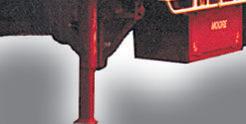


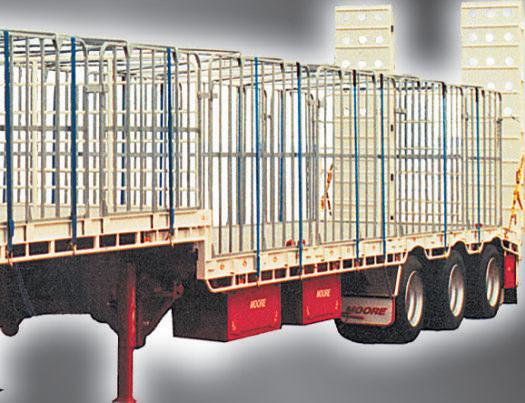



TAFE Queensland is providing quali ed technicians with express upskill programs to complete a second trade or expand their abilities into the rapidly expanding Electric Vehicle (EV) sector, with popular post-trade courses including the Certi cate III in Mobile Plant Technology (AUR31220) or the Battery Electric Vehicle Inspection and Servicing Skill Set (AURSS00064).
As industries such as the resources sector demand more workers, TAFE Queensland is providing experienced automotive technicians the opportunity to upskill and become a dual trade quali ed technician by earning their Certi cate III in Mobile Plant (AUR31220) through a specially designed program.
Eligible quali ed technicians with either a Certi cate III in Light Vehicle Mechanical Technology (AUR30620) or Certi cate III in Heavy Commercial Vehicle Mechanical Technology (AUR31120) can complete intensive upskill programs to complete the gap training required to secure a Certi cate III in Mobile Plant

TAFE Queensland’s agship trade training facility in Acacia Ridge is the birthplace of such courses, and business manager of heavy automotive training for the region, David Jenkinson, says there has been signi cant industry interest in dual-trade quali ed technicians.
“ e reason we started these courses was after talking to industry and being told there is a really strong demand for dual-trade technicians in
the resources sector. We have done these as bespoke programs for some large players in the resources space and can now open up the opportunity to individual workers as well,” Jenkinson said.
“ ese programs focus on not double-handling course material that students have completed during their initial apprenticeship. We train technicians in the skills gaps between their initial apprenticeship and their new qualication of the Certi cate III

in Mobile Plant Technology (AUR31220).”
“Feedback so far has been outstanding and partnering businesses have been pleased and keen to continue enrolling workers. For anybody eyeing a career change into the resources sector, this is a great opportunity,” he said.
TAFE Queensland is in constant engagement with industries it serves to determine how training can support the needs of industry, and upskill programs are a key example of
this. With 140 years of strong history, the largest training provider in Queensland has navigated many industrial changes and emerging trends and will continue to do so well into the future.
As motorists and transport eets across Queensland and the world make the shift towards electric vehicles (EVs), Queensland’s automotive industry is preparing for an in ux of EV servicing, and experienced local technicians are now able to complete the
new Battery Electric Vehicle Inspection and Servicing Skill Set (AURSS00064) at TAFE Queensland for no cost, under the Australian and Queensland Governments’ Fee-Free TAFE initiative. e intensive four-day course covers basic skills needed to begin working con dently on EVs and has been taken up by hundreds of Queensland technicians since its inception in early 2023, with regular on campus delivery available at TAFE Queensland’s Acacia Ridge and Townsville (Bohle) campuses across 2024.
TAFE Queensland emerging industries business development manager Shawn O’Sullivan said TAFE Queensland had worked hard to develop critical training to support the local automotive industry’s transition to EV work as ownership of these vehicles continues to increase across the state.
“EV and zero emissions vehicles (ZEV) training are a focus for TAFE Queensland as the state moves towards greater ownership of these vehicles.



Complete our four day Accredited Skill Sets in EV work at TAFE Queensland for little to no cost.
Quali ed Queensland technicians can complete the Battery Electric Vehicle Inspection and Servicing Skill Set AURSS00064 for $0 under Fee-Free TAFE funding.
Quali ed Mobile Plant technicians and other industry members are eligible to complete the Hybrid and Electric Vehicle Skill Set SSAUR0005.
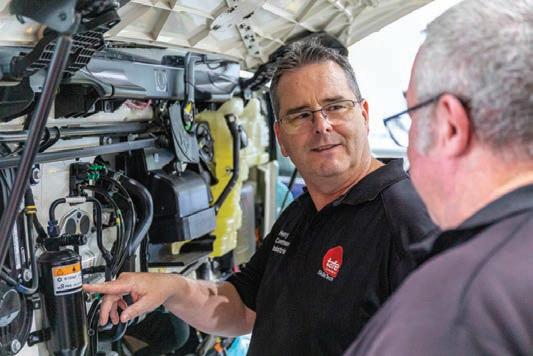
Rystad Energy predicts battery electric vehicles will make up 50 per cent of car sales worldwide by 2033 and will account for almost every new car sold by 2050, and we are delivering local technicians the training they need to prepare for this increase,” O’Sullivan said.
“TAFE Queensland is training automotive students in the skills needed to work on the vehicles of today and of the future. is training is being carried out in line with the Queensland Government’s Zero Emission Vehicle Strategy 2022-2032, helping to achieve the goal of net zero emissions by 2050.
“ ere is a need for perpetual innovation in the training industry, especially for the automotive sector, and TAFE Queensland prides itself on working closely with industry to shape our training products and ensure we are providing forward-thinking training options.
“Upskilling local techni-
cians in these skills as part of the Fee-Free TAFE funding is a huge bonus for Queensland, and graduates of this Skillset will be closer to becoming workplace supervisors of apprentices in the all new EV apprenticeship course,” he said.
TAFE Queensland is registered to deliver the all new Electric Vehicle apprenticeship across Queensland, the Certi cate III in Automotive Electric Vehicle Technology (AUR32721), with apprentices learning on campus using a eet of training-purpose hybrid and battery electric vehicles including a Foton Mobility electric truck.
Quali ed workers currently in industry or employers interested to gain a larger pool of new employees are encouraged to reach out to TAFE Queensland via client. solutions@tafeqld.edu.au to discuss their options and eligibility for dualtrade upskill and electric vehicle training programs.


CHARLIE Pittman, of Pittman Transport, is the winner of the prestigious Young Driver of the Year award from the Livestock, Bulk and Rural Carriers Association (LBRCA).
Orange-based Pittman, 25, was presented with the prize at the LBRCA’s recent annual conference in Wagga Wagga, an event focused on addressing driver shortages, particularly among young drivers entering the industry.
Judges said that Pittman’s “outstanding dedication to safety, excellence in best practices, and notable contributions to the road transport industry have rightfully earned him this esteemed accolade”.
Hailing from a family immersed in the transport business for over a century, Pittman’s journey into the industry began after completing a business degree.
He embraced the family legacy by actively engaging in the transport of livestock and bulk commodities throughout Australia.
Pittman’s commitment extended beyond driving, as he diligently learned all facets of the business, including allocations, scheduling, and compliance.
“Charlie’s nomination for the award is a testament to his passion for the transport sector, continuous learning, ongoing professional development, and his advocacy



for young people within the industry,” the judges added.
Upon receiving the award, Pittman highlighted the allure of the job, emphasising the independence and autonomy it provides.
“The job is really exciting as you can be your own boss behind the wheel, and the opportunity to travel is also quite attractive,” he said.
“In the last three years, I have travelled through most of NSW and as far as Far North Queensland and Tasmania.”
Lynley Miners, the award initiator, praised Pittman’s outstanding best practice approach and commitment to driving and safety.
“Charlie displays an exemplary work ethic, a proactive approach to safe work practices, and is a brilliant role model for the rural transport industry,” Miners said.
“The professionalism and leadership qualities Charlie possesses are a real win for our industry. He is hungry to learn and absorb every detail of the industry to be the best at what he does.
“Charlie will work closely with LBRCA over the next 12 months to showcase the heavy vehicle industry to young people as a safe, rewarding and viable career choice.”
Pittman expressed gratitude to LBRCA and SafeWork NSW for supporting the award over the past de-





cade. He also thanked his parents, Jeremy, and Annabel, for their unwavering support in pursuing a rewarding career in the heavy vehicle industry.
Miners confirmed that the calibre of nominations received for this year’s award was outstanding.
“This award is so important as it not only recognises and showcases rising young industry talent but also
builds their confidence and reaffirms to them that they are doing a great job and to keep doing what they are doing,” she said.
Among the other finalists for the award were Brett Dawson from Dawson’s Livestock Transport Wagga, Nicholas Hamilton from Cavanagh’s Stockmaster, and Christopher Wisniewski, a driver for Divall’s Earthmoving and Bulk Haulage.




Our Euclid Automatic Slack Adjusters are constructed using high-grade materials to fulfill exacting durability and quality standards. Featuring corrosion free components constructed from premium materials which undergo heat treatment and precision machining they ensure an error-free performance every time you brake.
Also versatile, Euclid Auto Slack Adjusters can be utilised as direct replacements for existing competitive slacks on trucks, buses and trailers.



Euclid Auto Slack Adjusters are Meritor approved and have been rigorously tested to exceed SAE J267 standards. Each slack adjuster comes with a one year unlimited km warranty.



For futher information, please visit meritorpartsxpress.com